

Bold Action for Birds
American Bird Conservancy (ABC) takes bold action to conserve wild birds and their habitats throughout the Americas. Inspired by the wonder of birds, we achieve lasting results for the bird species most in need while also benefiting human communities, biodiversity, and the planet’s fragile climate. Our every action is underpinned by science, strengthened by partnerships, and rooted in the belief that diverse perspectives yield stronger results. Founded as a nonprofit organization in 1994, ABC remains committed to safeguarding birds for generations to come. Join us! Together, we can do more to ensure birds thrive.
Bird Conservation (ISSN: 3067-2228) is the member magazine of American Bird Conservancy and is published three times annually. Nonprofit postage paid at San Diego, California.
POSTMASTER: Send address changes to Bird Conservation, P.O. Box 249, The Plains, VA 20198. Send undeliverable copies to American Bird Conservancy, 8255 E. Main St., Suite D & E, Marshall, VA 20115. Return postage guaranteed.
Copyright 2025 American Bird Conservancy
Join Us
If you’re not already an ABC member, we invite you to join us. Members at any of our five levels of commitment receive a one-year subscription to Bird Conservation, access to members-only events and webinars, a choice of premiums, and other offers. Give now at abcbirds.org/membership or see contact details below.
Connect
Magazine feedback: We welcome letters to the editor and other feedback. Contact us at: magazine@abcbirds.org.
Membership or other inquiries: Contact us at American Bird Conservancy, P.O. Box 249, The Plains, VA 20198 | 540-253-5780 | info@abcbirds.org
Sign up to receive emails from ABC: abcbirds.org/email
Find and follow us on social media:

MAGAZINE STAFF
Vice President, Communications and Marketing Clare Nielsen
Director of Communications
Jordan E. Rutter
Managing Editor Matt Mendenhall
Graphic Designer Maria de Lourdes Muñoz
Writer/Editor Molly Toth
Director of Brand Strategy and Web Som Prasad
Science and Policy Consultants
Steve Holmer, Hardy Kern, Daniel Lebbin, George E. Wallace, David A. Wiedenfeld
Contributors Ben Catcho, Anna Deichmann, Chris Farmer, Annie Hawkinson, Hardy Kern, Bryan Lenz, Sea McKeon, John C. Mittermeier, Jack Morrison, Veronica Padula, Holly Robertson, Steve Roels, Christine Sheppard, Marcelo Tognelli, Liz Virgl, Amy Upgren
COMMUNICATIONS AND MARKETING TEAM
Director of Marketing Lara Long
Multimedia Producer Erica Sánchez Vázquez
Bird Library Specialist Gemma Radko
Media Relations Specialist Agatha Szczepaniak
Social Media Specialist Emily Williams
Digital Marketing Specialist Noah Kauffman
Digital Content Specialist Kathryn Stonich
ABC MANAGEMENT TEAM
President Michael J. Parr
Vice President of Advocacy and Threats
Programs Brian Brooks
Vice President of Development Erin Chen
Vice President of Finance Angela Modrick
Vice President of Operations Kacy Ray
Vice President of Policy Steve Holmer
Vice President of Threatened Species
Daniel Lebbin
Vice President of Together for Birds
Naamal De Silva
Vice President of U.S. and Canada
Shawn Graff
Vice President and General Counsel
William “Bishop” Sheehan
Senior Conservation Scientist David Wiedenfeld
Director of International Programs Amy Upgren
Director of Migratory Bird Habitats in Latin America and the Caribbean Andrés Anchondo
Oceans and Islands Director Brad Keitt
Central Regional Director Jim Giocomo
Southeast Regional Director Jeff Raasch
Western Regional Director Maria Dolores Wesson
MEMBERSHIP TEAM
Membership Director Kelly Wood
Membership Coordinator Jenna Chenoweth
Database Quality Coordinator Jamie Harrelson
Office Manager Cindy Elkins
BOARD OF DIRECTORS
Larry Selzer, Chair
Michael J. Parr, President
David Hartwell, Treasurer
Mike Doss
Jonathan Franzen
Maribel Guevara
Josh Lerner
Annie Novak
Ravi Potharlanka
Carl Safina
Amy Tan
Stephen Tan
Shoaib Tareen
Walter Vergara
Jessica Wilson

In Every Issue
4 Chirps
Feedback about our redesign.
5 From the Perch Hope for a future free of extinctions.
6 In Focus
The endangered tanager of Bolivia’s High Andes.
8 Bird Calls
New bird reserves in Chile and Peru, how drones are helping Hawaiian honeycreepers, protecting the Migratory Bird Treaty Act, and more news.
14 The Stopover Sandy beaches and dunes, and the birds that rely on them.
38 Together for Birds Seeking kinship with seabirds.
40 Bird Hero Dave Ewert’s lifelong commitment to birds.
42 Action & Advocacy Tips for gardening without harsh pesticides.
43 Field Notes
Summer 2025
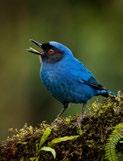
Lasting Stewardship for Bird Reserves
How a 10-year-old initiative is helping bird reserves in more than a dozen countries remain sustainable — and focused on conserving rare birds. 18
Filling the Gaps
ABC research is shining new light on which Latin American birds are least protected — and how much habitat must be conserved to reduce their extinction risk. 26
Celebrating Andean Birds
The authors of Birds of the Tropical Andes share the story of how their stunning new book came to life. 32
To catch an oystercatcher.
44 The Science of Birds Concern and hope for common birds, a desertnesting seabird, and more.
46 The Art of Birds
Community bird art from Hawai‘i to Peru.
48 The Cache A film and books about bird conservation.
49 Flock Talk How to get our new hat, readers’ photos, and more.
50 Field of View
Remembering riches amid tireless hope.
Cover photo
Masked Flowerpiercer at The Birdwatcher’s House-Santa Rosa Bird Lodge in Ecuador by Owen Deutsch/owendeutsch.com
Pintoʼs Spinetail
Ciro Albano

Chirps
What we’re hearing from ABC members and friends.
Following Our Paper Trail
We were thrilled to receive so many positive comments on our spring issue, the first edition published with a new look and feel. Our readers found a lot to love about the revamped Bird Conservation, and shared some valuable feedback and constructive ideas that we’ve already taken to heart — even in the issue you’re now holding! Make sure to tell us what you think about this issue at abcbirds.org/MagSurvey.
Did you know that the paper we use makes a difference for birds? We work closely with our printer, Neyenesch Printers, a women-owned business based in San Diego, to select the most sustainable paper products available. Why? As a Sustainable Forestry Initiative partner, achieving these standards is our way of sharing stories about ABC’s work throughout the Western Hemisphere with you while doing the most good for birds. We use the most sustainable paper products, inks, and production processes we can, and we hope with some adjustments to our magazine’s binding, you’ll have a publication that’s as easy to read as it is beneficial for birds.
Readers React to Our Spring Issue
I love that as an organization you have altered everything about your magazine to make it sustainable but especially because you found a woman-owned facility! Your magazine has always been a great read:
quick-reading articles that provide all you need to know in a format that is very enjoyable, has excellent photography, and introduces your readers to birds, places, and issues over the entire planet.
— Mary Alice K.
I am more impressed with every issue as to the action and advocacy you work so hard on to save birds and their habitats — especially when they leave us and head to their winter areas! I doubt most people think about that other part of their lives. Your organization is one I support as best I can because you are so involved and active!
— JoAnne L.
I love reading about all of ABC’s great work and accomplishments and hopes for the future. Reading your magazine is like a balm for the birder’s soul. In this age of environmental degradation, habitat loss, and all the other many threats to birds and other wildlife, it’s so heartening to be reminded of all the good work and hopeful “wins” on behalf of birds that are also happening. — Jennifer G.
Editing is an A+, well written and organized, great thorough descriptions, but casual, interesting and understandable for the neophyte bird lover. — Don H. There’s a nice balance of beautiful pictures, information on birds and their tribulations, and some positive trends, and science that points out the importance of protecting bird habitats and populations, and ways to help in making that happen. It’s critical, I think that people see how
they can make a positive impact, and this magazine does a great job with giving that information. — Norm J.
I love the look (and feel) of the magazine. The design is very clean and easy to read, and the magazine feels like it is made of a high-quality stock of paper. I am a photography enthusiast who enjoys taking photos of birds, and overall I think the photos of birds in the magazine are outstanding. Great job to the team that worked on the redesign! — Richard A.
I was so impressed with Killian Sullivan’s article about adding five rare lifers, with the help and support of his parents. I especially liked his phrase “I looked toward my mom and could see my full smile reflected in her sunglasses.” Excellent writing considering that he was only 13! — Cynthia P.
Let’s hear from you!
Share your thoughts about our magazine, emails, or online content at magazine@abcbirds.org. Please include your full name and location. Letters may be edited for length and clarity. (Note: Opinions expressed are those of the authors.)
Sparkling Violetear
Owen Deutsch
Hope for a Future Free of Extinctions
Anyone with even a passing interest in birds probably knows the names of at least a few extinct species: Passenger Pigeon. Carolina Parakeet. Poʻouli. Atitlan Grebe. For those of us whose job is to conserve birds, the names of extinct species are haunting reminders of why we work in this field — to make sure no other species join those that have been lost.
Since ABC’s founding three decades ago, we have worked with local partners and national and regional governments to protect habitat for the rarest species in the Western Hemisphere. In that time, 18 likely bird extinctions have been averted in the Americas, and ABC and our partners contributed significantly to preventing six of these (including the Yellow-eared Parrot, pictured below).
In 2005, we helped establish the Alliance for Zero Extinction, a worldwide effort to identify the sites where species classified as Critically Endangered and Endangered on the IUCN Red List were restricted to just one location and to protect these sites. Now, a team of our researchers has published a study that identifies Critically Endangered, Endangered, and some Vulnerable birds in Latin America that have small populations and not enough protected habitat.
The study pinpoints the species that need the most help and the locations needed to avoid their extinctions — areas that amount to less than 0.1 percent of the overall Latin American landscape. We’re excited about the research because it offers hope for preventing further bird extinctions. (Learn more in an article explaining the study on page 26.)
Of course, another critical aspect of our work is helping to establish bird reserves. Since the late 1990s, we’ve partnered with dozens of other groups to create or expand more than 120 reserves in Latin America and the Caribbean (plus 11 more in the United States). Altogether, we’ve helped protect more than 1.1 million acres in 15 countries. Birds aren’t the only beneficiaries, obviously; these places also conserve mammals, insects, fish, plants, and other wildlife, as well as forest carbon.
The conservation gains from these reserves are at risk, however, if a particular site isn’t managed and maintained to help its wild residents thrive. That’s why, for the last decade, ABC and our friends at March Conservation Fund have operated the Latin American Reserve Stewardship Initiative (LARSI). It provides technical support and resources for partner groups throughout Latin America and is the subject of an important article on page 18. In addition, many ABC-supported reserves also benefit from bird tourism revenue, which has become a mainstay of bird reserve sustainability across the region.
Lastly, while we’re on the subject of Latin America’s birds, photographer Owen Deutsch and I recently produced a new book, Birds of the Tropical Andes. It celebrates the tremendous diversity and beauty of the birds across a vast swath of South America. You can read more about it on page 32.
Thank you for all your support for birds through American Bird Conservancy!
Michael J. Parr President

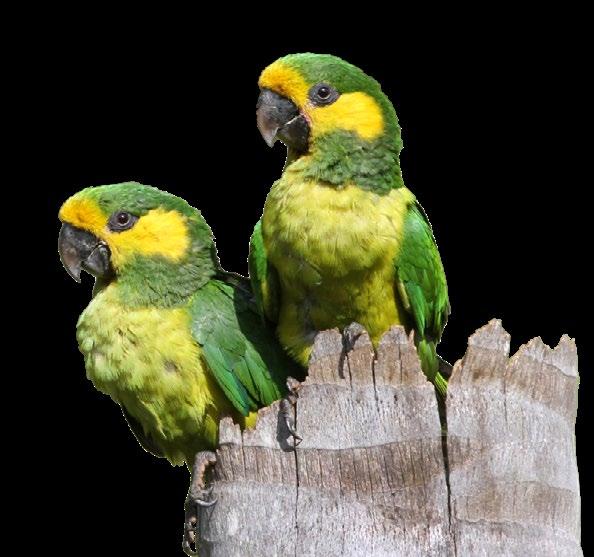
ABC helped the recovery of Colombia’s Yellow-eared Parrot after the species was rediscovered in 1999.
The Endangered Tanager of Bolivia’s High Andes
Shrubby mountain slopes in the Andes of central Bolivia are home to several endemic bird species, including the distinctive Cochabamba Mountain Finch.
The striking orange-rufous and gray bird, which has recently been shown to be part of the tanager family, measures about 7 inches long — about the same as North America’s Western Tanager. A nonmigratory species feeding mainly on seeds and insects, the mountain finch is found at elevations from about 10,000 to 12,500 feet. While it prefers dry forests on mountain slopes with Polylepis and alder trees and dense shrubs, it can also be found in mixed agricultural and forested areas.
Breeding takes place during the rainy season (December to March), and adult birds care for their offspring for many months after they leave the nest. Shrubs, bunchgrass, and ground bromeliads are often chosen for nesting, and while few nests have been studied, it appears that the bird typically lays only one or two eggs and produces one or two young per nest.
The Cochabamba Mountain Finch is named for the region where it lives — Bolivia’s Cochabamba department — and its population stronghold is Tunari National Park’s southern slope. The park encompasses the Tunari mountain range and remarkable biodiversity (including Geoffroy’s
Population: 270-2,700
IUCN Status: Near Threatened
Trend: Decreasing
Habitat: Valleys with shrubby woodlands and mixed agricultural and forested areas
Other Names: Monterita de Cochabamba (Spanish), Qoypita puka-q'ellitu (Quechua)

cat and vicuñas), and it is home to numerous Quechua communities. Asociación Armonía, one of ABC’s longtime partners in Bolivia, has been implementing a native forest restoration program for more than a decade with the participation of 37 local communities to protect and restore the ecosystems in which the mountain finch and other endemic species occur.
“These local stakeholders are the custodians of the watersheds and, therefore, key to ecosystem protection,” said Rodrigo W. Soria Auza, Executive Director of Armonía.
BirdLife International classifies the Cochabamba Mountain Finch as Near Threatened, while the Bolivian government considers it Endangered. BirdLife and the IUCN Red List estimate its population at 270–2,700. Soria Auza said no recent formal population count has been undertaken and that the true number is likely “closer to the lower end” of BirdLife’s estimate.
The new book Birds of the Tropical Andes, by ABC President Michael J. Parr and photographer Owen Deutsch, notes that the mountain finch can be found close to roads in the region. Parr suggests traveling birders search the Puente San Miguel area on the road from the city of Cochabamba to Tunari. Other species of interest in the area include the Giant Conebill, Tawny Tit-Spinetail, and Rufous-sided Warbling Finch.


Cochabamba Mountain Finch Poospiza garleppi
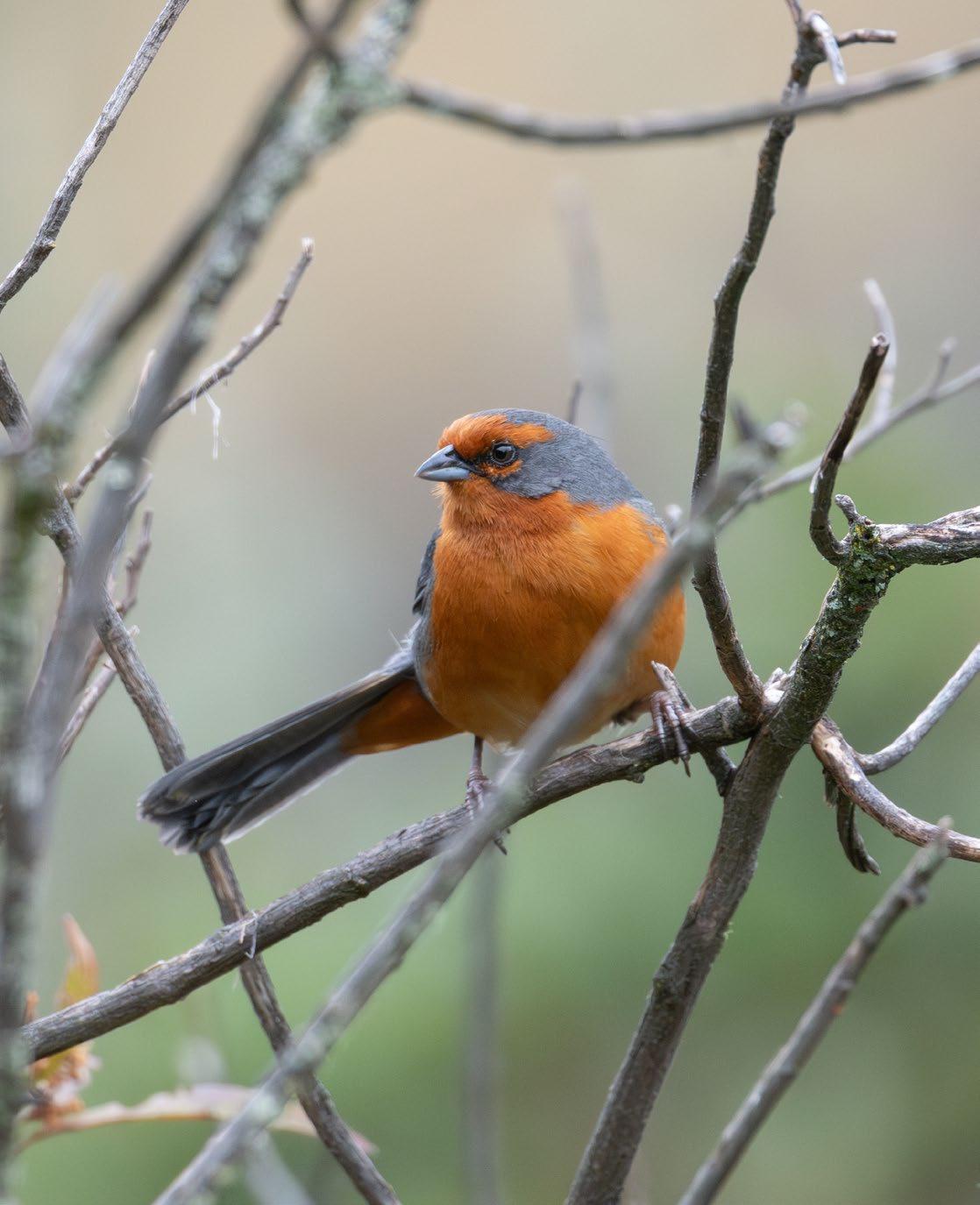
The Cochabamba Mountain Finch of western Bolivia displays a stunning mix of two colors: gray on most of its head and upperparts and orange-rufous on its forehead, eyebrow, crescents below the eyes, chin, and underparts.
John C. Mittermeier
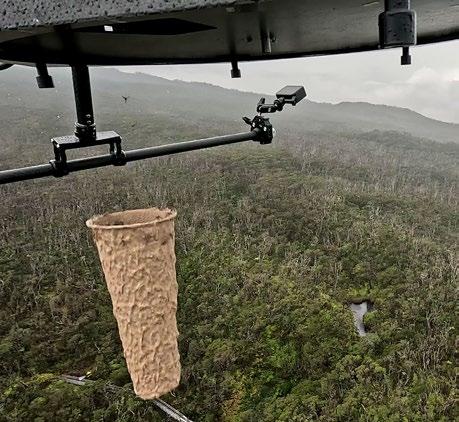
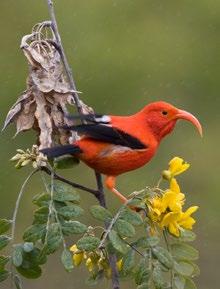
Drones Deliver a Lifeline to Forest Birds in Hawai‘i
Drones equipped with specially designed biodegradable mosquito pods are helping to protect honeycreepers from extinction in Hawai‘i — and reduce the presence of harmful mosquitoes in the forests.
Non-native southern house mosquitoes spread avian malaria among the state’s native honeycreepers with incredible efficiency. The birds have little to no immunity to the illness, and the mortality rate is as high as 90 percent for species like the ‘I‘iwi.
Since 2023, the multi-agency partnership Birds, Not Mosquitoes (BNM), which includes ABC, has been using helicopters to release beneficial, non-biting male mosquitoes in the remote forests of Maui, following
years of rigorous study and regulatory approvals, and just started releases on Kaua‘i this February. These lab-reared males have a bacteria that occurs in nature, which results in infertile eggs when the males mate with wild females.
Over time, the mosquito population will decline, giving the embattled honeycreepers a reprieve.
Recently, BNM partnered with Drone Amplified and IS4S Orlando to develop an innovative pod system for the drones, which maintains a controlled temperature to ensure the survival of mosquitoes on the ground.
To maximize their efficiency, each drone is equipped with multiple pods. Like the helicopters, the drones must contend with challenging conditions and be able to
manage significant elevation changes, strong wind, and frequent rain across thousands of acres of remote, mountainous forest habitat.
This new step for BNM’s mosquito-control capacity comes at a critical time: Many of the 17 remaining honeycreeper species, including the Kiwikiu and ‘Ākohekohe on Maui and ‘Akeke‘e on Kaua‘i, are highly endangered. Reducing mosquito populations is paramount to safeguard their future.
Acknowledgement
ABC is grateful to the National Fish and Wildlife Foundation, BAND Foundation, Hawai'i Community Foundation, Animal Welfare Institute, Lemmon Foundation, Kay Hale, and other federal and private donors for their support of this program.
BirdsPlus Index Honored with Incubator Grant
ABC’s BirdsPlus team was selected to join the 2025 cohort of the Conservation Finance Alliance (CFA) Incubator program to help advance the BirdsPlus Index, which was the subject of an in-depth article in our Spring 2025 issue (page 18). ABC also received a $25,000 grant from the CFA to support the team throughout the incubation period. The program supports “conservation finance ventures that can generate a financial return and conservation finance concepts that lead to policy, regulatory, or nonprofit finance solutions,” according to the alliance.
The BirdsPlus team will benefit from mentorship, technical assistance, and global exposure through the alliance’s network. “Understanding, measuring, and reporting on biodiversity and nature impact is such an important part of conservation finance. We’re excited to demonstrate just how much birds can tell us about our impact on ecosystems and biodiversity in a quantitative, scalable, and accessible way with the BirdsPlus Index,” said Corey Martignetti, ABC’s Senior Director of Impact Investing.
Adam Knox (left), Robby Kohley (right)
Left A drone releases a pod containing beneficial mosquitoes over Maui.
Below The ‘I‘iwi is one of the native bird species that mosquito releases are intended to help.
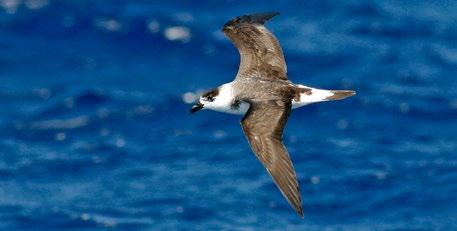
Black-capped Petrel
Rare Seabird Sighting Offers Hope
Tiny Alto Velo Island, off the southern coast of the Dominican Republic, already boasts the largest breeding colony of Sooty Terns in the Caribbean. Now, it offers hope for one of the region’s most poorly known seabirds.
In late March, Brad Keitt, ABC’s Oceans and Islands Di-
rector, and colleagues from SOH Conservación spotted at least six Black-capped Petrels not far from shore. The Endangered species has a population estimated at little more than 1,000 breeding pairs. The petrels spend most of their life at sea, coming to land only to nest and returning each breeding season to just one island: Hispaniola.
On Alto Velo, which measures 0.39 square miles (1.02 square km), ABC and several
A New Pinyon Jay Plight?
The Pinyon Jay is found only in the woodlands of the western United States, specifically in pinyonjuniper, chaparral, and scrub-oak forests. In years when food from pinyon pine seeds is lacking, the birds may venture outside of their range. An unfortunate and emerging new threat is taking the songbird much farther afield: to pet markets in the European Union.
A recent paper published in the European Journal of Wildlife Research documents observations
of several Pinyon Jays in pet markets in Europe. The sightings were incidental, and more research is needed into the extent of the pet trade in the jay.
The species previously experienced severe population declines from habitat loss as pinyon-juniper forests were converted for grazing, and today these same forests are thinned in an effort to prevent fires. The paper’s authors call for increased protections for the smart and social jay, including listing it under the Convention on
partners are restoring habitat and removing invasive predators for the benefit of endemic lizards and seabirds.
The team’s sighting of the petrels is notable because observations are rare away from Hispaniola and because the birds were close to land — a virtually unprecedented encounter in the last 50 years. Their presence suggests that
a restored Alto Velo, one free from the introduced, non-native cats and rats that plague the petrels’ nests on Hispaniola, might soon serve as a safe space for the species to breed.
Acknowledgement
ABC thanks the Critical Ecosystem Partnership Fund for supporting work on Alto Velo.
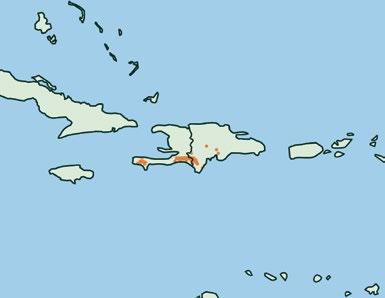
International Trade in Endangered Species of Wild Fauna and Flora (CITES) in order to monitor potential trade of the species. In addition, Defenders of
Wildlife last year sued the Department of the Interior over delays to protect the jay under the Endangered Species Act.

Known Black-capped Petrel breeding range
Haiti
Puerto Rico
Jamaica
Cuba
Dominican Republic
Alto Velo Island
The Pinyon Jay is a muted blue corvid of the western U.S.
Brian Patteson (top), Tim Zurowski/Shutterstock (right)
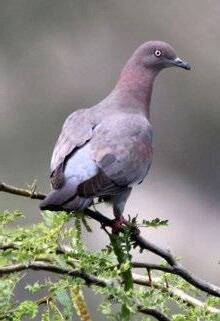
Puerto Rico’s Plain Pigeon in Jeopardy
The once widespread Puerto Rico Plain Pigeon faces an uncertain future. Laid low by habitat destruction and hunting, and more recently, hurricanes, its population now hovers at an estimated 1,000 birds. A new study published in Bird Conservation International showed that the pigeon’s population has yet to recover from devastating losses following Hurricanes Irma and María, which ravaged the island in rapid succession in September 2017.
The study concludes that the chance of the population rebounding to its benchmark 30,000 individuals is highly unlikely, but a return to a population of 5,000 is within striking distance and would ensure population self-sustainability. The pigeon has recovered from hurricanes in the past, but without urgent conservation action, the fate of this genetically distinct subspecies remains unclear.
Three Wins for Bird-friendly Buildings
On a single night in October 2023, nearly 1,000 birds — mostly warblers, sparrows, thrushes, and others moving south after the breeding season — perished after colliding with the reflective glass facade of McCormick Place Lakeside Center in Chicago. The incident put McCormick Place in the national spotlight. ABC put a fullpage ad demanding action in the Chicago Tribune, and many others joined the outcry, prompting the building, long known for its outsized impact on birds by those monitoring collisions in the area, to finally take action.
Ahead of fall migration in 2024 and working with Toronto-based Feather Friendly, a company that makes scientifically tested collision deterrent products deemed “bird friendly” by ABC’s collisions testing program, McCormick Place installed markers along much of the building’s 120,000 square feet of exterior glass. Thousands of small, white dots spaced 2 inches apart break up the reflective surface, making the glass “visible” to birds. The $1.2 million project has paid off: Once the city’s most notorious bird-killing building,
bird deaths are down by 95 percent following the project’s completion.
Nearby Lake County, Illinois, made history as the county passed a firstof-its-kind bird-friendly building ordinance for residential construction, including new single-family homes. After working with ABC to identify county-owned properties prone to bird collisions and plan retrofits of problem buildings, the county set its sights on widening its impact for birds. Under the new policy, homeowners and building owners can select any type of glass they want, but any windows lacking full, external window screens must be treated with ABC-approved window retrofit products.
And we’re happy to report that bird-friendly design is in vogue: In May, the Michael C. Rockefeller
Wing at the Metropolitan Museum of Art in New York reopened following a major renovation that replaced windows that were notoriously bad for birds. ABC worked closely with the glass designers to ensure a bird-friendly design. Under a 2020 New York City ordinance shaped by ABC input, all new buildings and major glass replacements must incorporate bird-friendly materials on glass. The reimagined wing is earning praise not only for the artwork it houses but for its construction. Featuring a massive window overlooking Central Park, the new design’s fritted glass helps birds avoid the building.
Acknowledgement
ABC is grateful to the Leon Levy Foundation, Dudley T. Dougherty Foundation, and to David Walsh for their support of our Glass Collisions Program.

The glass surfaces of Chicago's McCormick Place now feature Feather Friendly collision deterrent dots, making the building more visible to birds.
Plain Pigeon
Daniel J. Lebbin (top), Kaitlyn Parkins (bottom)

Tell Congress that Birds Matter
Despite bipartisan support for the Migratory Bird Treaty Act (MBTA), the current administration is attempting to end the requirement that industries take available steps to avoid incidental killing of migratory birds, opening the door for millions of preventable bird deaths. Urge your senators and representatives to support legislation that restores MBTA protections for migratory birds: abcbirds.org/MBTA
Endangered Species Act at Risk
For more than 50 years, the Endangered Species Act (ESA) has provided the roadmap and resources that have been instrumental in bringing beloved species like the Bald Eagle and California Condor back from the brink of extinction. The power of the ESA pivots on the word “harm.” For decades, “harm” has included not just direct killing, capturing, and harassment of protected species, but also disruptions to their habitats, food sources, behavior, and other elements intrinsic to a species’ survival.
This spring, the U.S. Fish and Wildlife Service (FWS) announced its intention to redefine “harm” under the ESA. The proposed change would narrow the definition of “harm” and remove habitat from the
conversation, protecting species only from those actions that would directly kill individuals (also known as “take”).
ABC opposes the proposed change and has submitted comments to FWS. For many of the 89 North American bird species currently protected under the ESA, the greatest threats to their survival are not direct harm but the downstream effects of habitat degradation or destruction, or changes to resource availability.
Currently, under the ESA, conservationists and resource managers are obligated to take the necessary steps to ensure species can rebound and prevent other species from sliding toward scarcity. The ESA has proven incredibly successful in its mandate to protect


species, due in large part to the protections it extends to the habitats species depend on for survival.
With this narrowed definition of “harm,” many of the ESA’s greatest conservation achievements would have been impossible. The Kirtland’s Warbler, once reduced to a population of only a few hundred birds, was removed from the endangered species list in 2019, its population rebounding thanks to
concerted, ongoing habitat restoration. The species was never seriously threatened by direct take, and if the proposed definition of “harm” had been in place, the Kirtland’s Warbler very well could have been lost.
The official comment period on the proposed definition change has closed, and FWS is required to review all comments before making a final determination, which is expected this summer.
Bald Eagle
American Redstart
Joshua Galicki (top), Larry Master (middle)

States Rein in Neonics, Help Horseshoe Crabs
Despite current challenges at the federal level, states across the U.S. are taking meaningful action for birds and habitats.
Maine’s legislature recently directed its state Board of Pesticide Control to formally study the impact of neonicotinoid-coated seeds on the environ-
ment. Supported by ABC, this action is an important first step toward regulating the use of the widespread insecticides, which have long-lasting, deleterious effects on birds and their ecosystems. And in Vermont, a ban on neonic use on ornamental plants and lawns took effect in July
More Bird Habitat Protected in Peru and Chile
ABC partners in Peru and Chile are celebrating two new protected areas.
In Peru, Nature and Culture International created a conservation corridor covering more than 45,000 acres of the unique Marañón inter-Andean dry forest ecosystem.
Known as the Cutervo Regional Conservation Area, it conserves important habitat while supporting local communities, improving ecosystem services, and contributing
thanks to a bill ABC helped become law last year.
ABC was proud to be part of the team that helped draft Connecticut’s Senate Bill 9. Recently signed into law and set to take effect in 2027, the measure bans neonics from being used on 300,000 acres of golf courses, turf fields, and yards, and it immediately limits a particularly harmful type of rodenticide, which is toxic to raptors and scavengers, to professional use only.
In New York and Massachusetts, ABC has been directly involved in moving legislation aimed at conserving horseshoe crabs — ancient sea arthropods whose eggs are a vital food source for migratory Red Knots. The overharvesting of horseshoe crabs for biomedical
testing is a leading factor in the knot’s decline.
New York’s legislature passed a bill empowering the state’s Department of Environmental Conservation to regulate horseshoe crab management through 2028 and prohibiting the harvesting of horseshoe crabs for commercial and biomedical purposes. In Massachusetts, legislators are advancing a bill that would temporarily pause horseshoe crab harvests, with an exception for the use of horseshoe crabs as bait in certain fishing operations.
Acknowledgement
Thanks to the Raines Family Fund, David Kozak, One Hive Foundation, and other supporters of our Policy and Advocacy Division.
to climate change mitigation. ABC will be supporting management of the area, which conserves a portion of the extremely small range occupied by the Marañón Spinetail, a Critically Endangered member of the Neotropical ovenbird family.
In Chile, Red de Observadores de Aves y Vida Silvestre de Chile (ROC), with support from the International Hummingbird Society and ABC, began managing a microreserve
for Chilean Woodstar, a hummingbird numbering fewer than 400 birds. This is the third microreserve ROC is managing in the Chaca Valley, the last holdout of this Critically Endangered species. So far, ROC is managing 40 acres and restoring the area with natural vegetation to provide much-needed habitat for the tiny woodstar. With additional support from March Conservation Fund through the Latin American Reserve Stewardship Initiative, ROC is developing a management plan to
guide future actions in the reserve network.
On page 26 of this issue, we describe a new study about rare Latin American birds and their habitat needs; the spinetail and woodstar are among the 64 species that this research prioritizes for conservation action.
Acknowledgement
Thanks to the MarshallReynolds Foundation, Kathleen Burger, and Glen Gerada for supporting Marañón Spinetail conservation.
Gavin Shire
Horseshoe crabs move across an Atlantic coast beach.

Rare Hummingbird Prefers Streamsides
The Santa Marta Sabrewing, one of the rarest and least studied hummingbird species in the world, was so seldom spotted that it was lost to science for more than seven decades. The little jewel-toned hummingbird once held a spot in the top 10 “most wanted” list of the Search for Lost Birds, a collaboration between ABC, Re:wild, and BirdLife International. Now, three years after its rediscovery, the species is the subject of a study that sheds light on its life history and conservation status.
The Critically Endangered bird lives only in northern Colombia’s isolated Sierra Nevada de Santa Marta mountains, where it may number fewer than 50 individuals. Many months of monitoring by researchers from Universidad Nacional de Colombia, SELVA, ProCAT Colombia, and World Parrot Trust
to form a small resident population along a single stream, and, the researchers write, “this raises hope for the survival of the species.”
the Indigenous landowners and collaboration in developing conservation measures,” they write.
with support from ABC — and in close collaboration with the Indigenous communities whose land is also sabrewing habitat — found that the bird is highly associated with streams, where males hold year-round territories and form leks. They also observed males in mid-elevation habitats (3,700–6,000 feet) for 16 consecutive months, “suggesting that the species might not be an elevational migrant, as previously speculated.”
The team’s only potential observation of the bird’s breeding behavior was a sighting of a female gathering a spiderweb, which could have been used for nest building. Researchers observed sabrewings consuming nectar from plants in five families — information that can help conservationists protect and restore habitat.
The birds studied seem
Still, the team is concerned about fires and forest clearing in the area, and they ask for patience from the public and the birding tourism industry for the development of a sustainable ecotourism strategy because the area isn’t ready for an influx of visitors. “Any further study and observation require the active participation of
The journal Bird Conservation International published the study online in April.
Acknowledgement
Special thanks to Kathleen Burger and Glen Gerada, Carole Turek, the Constable Foundation, Ornis Birding Expeditions, and Shelby Robinson for their support of Lost Birds and the sabrewing study.
Concern for Osprey in Chesapeake Bay
The rebound of the Osprey after the banning of DDT in the 1970s was a major conservation success. But recently in certain parts of Chesapeake Bay, Ospreys are reproducing at a rate even lower than before the ban. The culprit this time is the harvest of Atlantic menhaden, a small, oily fish that serves as the base of the food chain for seabirds, larger fish, and marine mammals. This cornerstone of the Osprey diet is growing scarcer, causing young Ospreys to starve.
One company, Omega Protein, harvests millions of pounds of menhaden from the bay. The fish are “reduced” into fish meal and oil for pet food and salmon feed. Through
its lobbying, the company has blocked efforts by advocates, including ABC, to curb Omega Protein’s activities in Chesapeake Bay within Virginia, the only East Coast state that still allows menhaden reduction fishing practices. ABC is working with stakeholders to ensure a sustainable harvest.
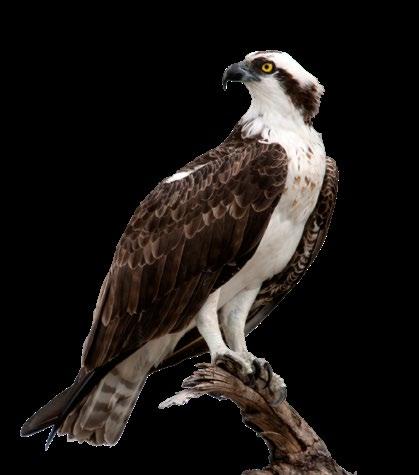
John C. Mittermeier (top), Michael Stubblefield (right)
The male Santa Marta Sabrewing is an iridescent blue and green hummingbird. Females are grayish-white below with shining green upperparts. The Critically Endangered species may number fewer than 50 individuals.
Osprey
The Stopover
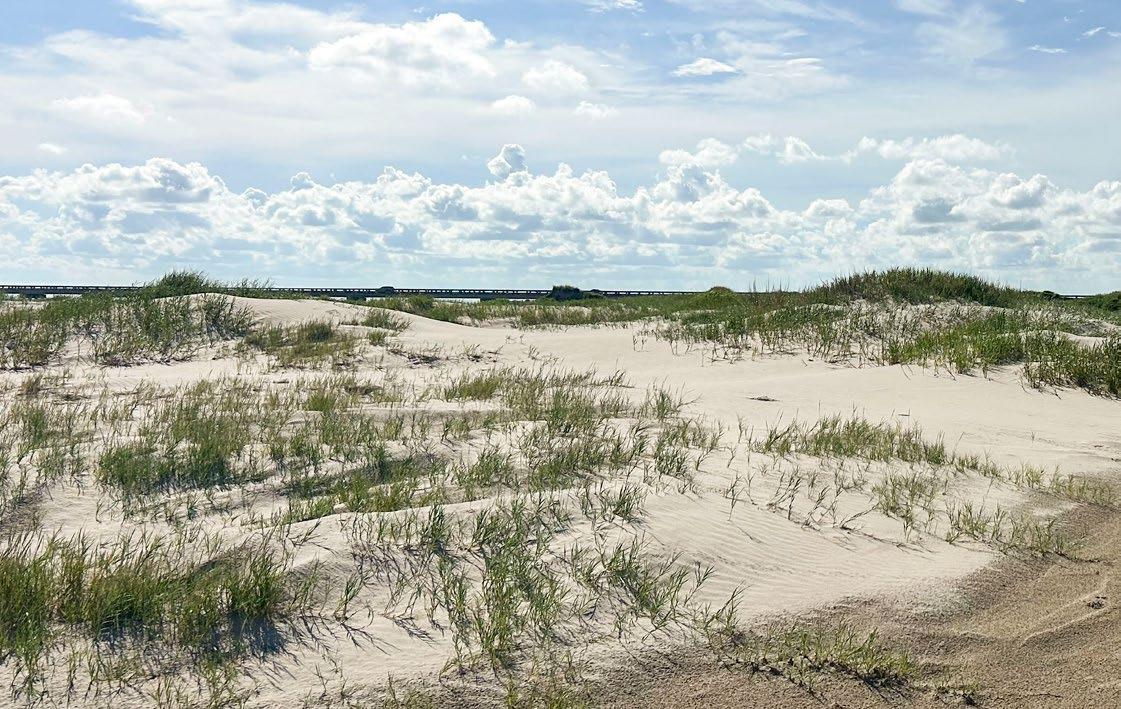
Where Sand Meets Sky
On the edges of oceans and seas, the sandy beaches and wind-carved dunes of the Americas breathe with a quiet, ancient rhythm. Here, sun and saltwater shape a shifting world, never the same from one tide to the next. Grains of quartz and shell mingle on the shore, sculpted into ridges and hollows by the wind’s unseen hand. Amid this austere beauty, life stirs — fragile, resilient, and wild.
The dunes rise like waves, cradling sea oats, beachgrass, and the soft-footed tracks of travelers. These hills of sand are not barren; they are sanctuary. In the early light,
the Piping Plover tiptoes across the beach, pale as foam and just as fleeting. Least Terns wheel above, their cries sharp as salt spray, while Black Skimmers trace the surf with knifepoint grace, slicing air and water alike.
Each spring, the dunes welcome Snowy Plovers to nest in shallow scrapes, in which their eggs are camouflaged in speckles and subtle hope. Wilson’s Plovers patrol the tide line, wary but determined. Ghost crabs dart, shells glinting, and the breeze carries the wild music of gulls and Sanderlings.
On many coasts, sea turtles clamber ashore, carving paths through moonlit dunes where shorebirds rest. These beaches are more than places of leisure — they are living, breathing margins between two worlds.
Conservationists work to ensure that beach-combing birds and other wildlife have the habitat they need. In Texas, for example, ABC and four partners work together to monitor plovers, terns, and skimmers. Along with land managers, we protect certain beaches and dunes, especially in summer, when the birds raise their young. We also reach out
Sarah Belles (sand dune), Greg Homel/Natural Elements Productions (tern), Paul Rossi (plover)



to local communities about keeping beaches safe for wildlife, and the SPLASh program removes plastic and other litter from shorelines.
In places where sand meets sky, the birds and their wild kin remind us to care.

abcbirds.org/BeachVisit
Beaches and sand dunes, such as the San Luis Pass Galveston Beach on Galveston Island, Texas, provide important habitat for birds such as the Least Tern (above) and Piping Plover (below).
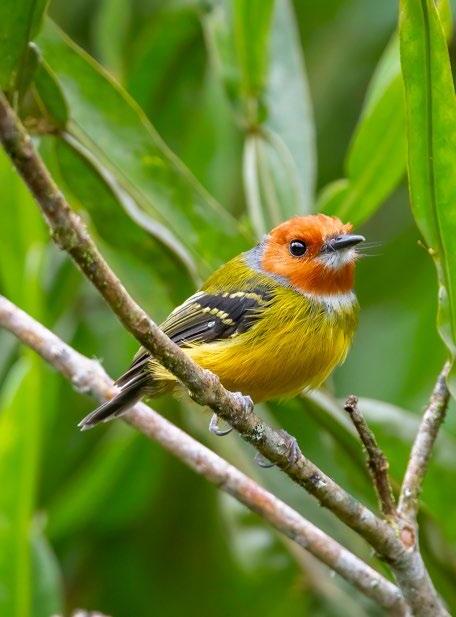
Lulu’s Tody-Flycatcher
Owen Deutsch

For Birds — Forever
Our unstoppable drive for bird conservation results, even in the face of adversity, is the essential element that motivates American Bird Conservancy. We know it motivates you, too.
Our shared determination to act on behalf of birds is inspired by wonder: Birds surprise us and delight us; they motivate us to learn, to explore, and to connect with others. We believe wonder is best when shared, and we are committed to helping others experience the same excitement that buoys our commitment to conservation.
Science guides our work, pointing the way to the species and habitats most in need — and to the best ways to achieve lasting bird conservation results. We turn theory into action, defining best practices and working with a diverse network of partners to adopt and adapt those practices — wherever and however research tells us we can most effectively help birds across the Americas.
Because at ABC, we believe that conservation is a human responsibility. Beyond the wonder birds inspire in us — and beyond any value birds provide to people — we believe that birds and their habitats have inherent value, independent of their benefit to humanity. Our obligation is to reduce and reverse the damage done to birdlife and bird habitats, focusing on those most at risk of disappearing forever. It is the only decent thing to do.
Birds are not only our business; they’re the beating heart of our organization. And so are you.
Just as a diversity of species and natural processes makes nature resilient, ABC recognizes that our organization — and birds — thrive when we embrace diverse perspectives. When we work in partnership with people and communities across the Americas. When we welcome everyone who cares about birds.
Because we accomplish more for birds and their habitats — together.
Please give generously today so that together, we can continue to take bold action for birds across the Americas. Thank you for caring about birds.

Help conserve birds and their habitats by using the enclosed envelope, scanning the code, or visiting abcbirds.org/ForBirds



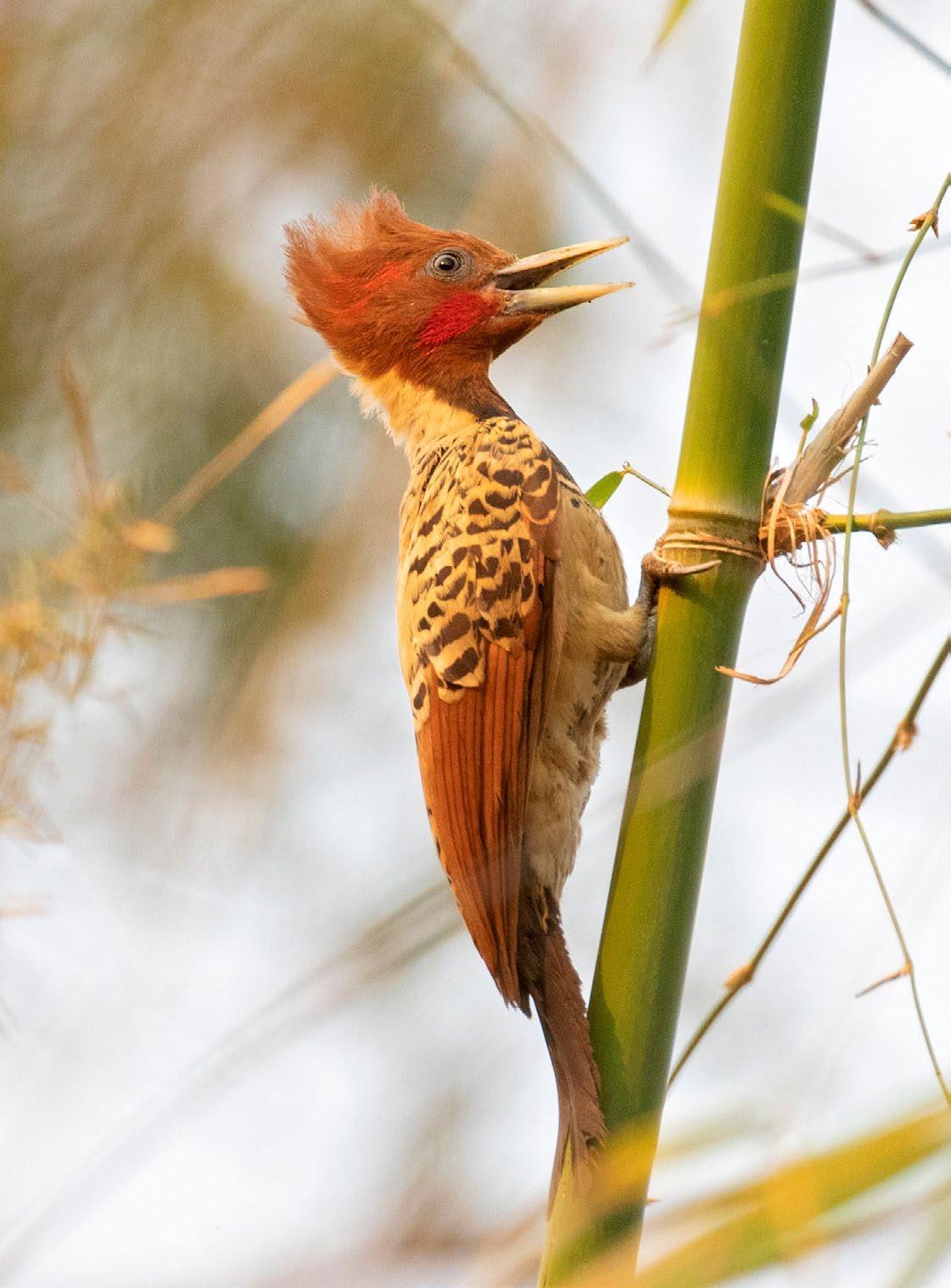
The Kaempfer's Woodpecker, a Vulnerable species found only in central Brazil, has benefited from recent firefighting efforts supported by the Latin American Reserve Stewardship Initiative.
Caio Brito
Lasting Stewardship for Bird Reserves
How a 10-year-old initiative is helping bird reserves in more than a dozen countries remain sustainable — and focused on conserving rare birds

by George E. Wallace
Anyone who owns a home knows that upkeep is required — from routine cleaning tasks to occasional calls to an electrician, plumber, or other pro for more involved jobs. The same principle holds true for nature reserves. Once land is established as a reserve, it needs stewardship support for staffing, habitat management, infrastructure, and the like.
The alternative is neglect. After all, insufficient planning and shortages of capacity and resources available to the organization managing a protected area can cause it to fail.
ABC and our partners have been in the reserve business for more than a quarter century: Reserves are the first line of defense against bird extinctions, and they provide crucial refuges for both migratory and resident bird species, as well as scores of insects, mammals, amphibians, reptiles, and plants. Before my retirement, I was involved with many land protection actions at ABC, and it’s one of the truly energizing parts of conservation work. With each piece of land conserved, it’s tempting to pump your fist and exclaim, “we did it!” And I assure you, we did — many times.
In fact, we celebrated “victory” with our partners on more than 600 tracts of land at 120 protected areas spanning over 1,140,000 acres in 14 Latin American countries. We accomplished this by working with 55 partners to buy land, secure easements and concessions, create community reserves and regional protected areas, and more. The majority of the reserves are owned and managed by in-country nongovernmental conservation organizations (NGOs), though some are community or publicly owned.
Then came the work to manage the reserves — to ensure that the lands we helped to protect actually work to prevent bird extinctions and maintain healthy populations. ABC has long believed that building capacity in the conservation movement is the foundation on which successful conservation is built, and we knew that new reserves would need ongoing management support.
So, as our land protection work gained steam starting in 2004, we looked for support to increase reserve sustainability in tandem with fundraising for land purchase. We found en-

lightened donors who understood the need for longer-term support for our partners. However, it was a constant struggle to keep this funding flowing, as many awards were one-year grants or from foundations that directed limited funding to new applicants, changed their priorities, or disappeared altogether.
A deeper problem also arose: While protecting land is easy to understand and attractive for donors, many of the activities needed to sustain reserves and their NGO stewards often are not. The pool of funders interested in supporting basic needs, like computer backup systems, training in fundraising, or support for websites or vehicles, is exceedingly small.
And sometimes the needs may be ones that partner organizations are reluctant to admit they have — such as financial and human resource training to prepare financial reports, budgets, forecasts and cashflow projections, job descriptions, and performance reviews. Even stickier, an organization may be facing issues that they fear could scare off donors, including governance challenges, budget deficits, and delegating roles and distributing responsibility from founding leaders to new staff as organiza-
This map shows the 13 countries where bird reserves are benefiting from ongoing investment to ensure they fulfill their purpose: preventing bird extinctions.
tions grow and mature. Yet, meeting all of these needs is essential for organizations — and their work — to succeed. Leaving these obligations unmet means putting our reserves at risk.
By 2014, we knew we required a program that would deliver more consistent technical support and resources to ABC partners. Thankfully, that need aligned with the goals of March Conservation Fund (MCF), a San Francisco-based foundation that supports land conservation and stewardship, research, and education. A year later, ABC and MCF launched the Latin American Reserve Stewardship Initiative (LARSI). Now, a decade later, LARSI has provided grants totaling more than $3.8 million in support of 29 conservation NGOs working to protect more than 70 reserves in 13 countries (see sidebar, page 23). The following case studies illustrate the wide variety of activities supported by LARSI as well as its reach and impact.
A Turning Point in Peru
In 2005, Asociación Ecosistemas Andinos (ECOAN) and ABC embarked on an ambitious plan to protect pristine forests bordering the 450,000-acre Bosque de Protección Alto Mayo in northern Peru. This effort would provide a barrier to agricultural expansion from the west in the already-threatened protected area and conserve habitat for the amazing Longwhiskered Owlet (listed as Endangered at the time, since downlisted to Vulnerable to extinction) and over 560 additional bird species.
It was a huge leap for ECOAN, whose activities at the time were concentrated in the Vilcanota range of the Andes near Cusco in southern Peru. Ultimately, with ABC support, the group purchased 42 properties to create the Área de Conservación Privada Abra Patricia-Alto Nieva (Abra Patricia) spanning 8,226 acres and securing a conservation concession (akin to a longterm lease) from the Peruvian government for another 16,557 acres. In addition, ECOAN and ABC secured a 95-acre easement on an important tract of land (Huembo) for the spectacular Marvelous Spatuletail hummingbird in the nearby town of Pomacochas.
At both sites, ECOAN constructed ecotourism lodges for visiting birders and other naturalists to generate income at the reserves. While ABC
secured grants to buy land, build lodges, and hire staff, LARSI provided support over eight years, from 2015 to 2022, for an array of activities that put the reserves and ECOAN on firmer footing. LARSI contributed to lodge and kitchen upgrades, installation of solar panels and a septic system, and needed maintenance.
Importantly, LARSI supported salaries for staff at Abra Patricia and Huembo during the COVID-19 pandemic. LARSI provided similar support during the pandemic to other conservation NGOs.
“LARSI’s support marked a turning point in ECOAN’s history,” said Adrian Torres, ECOAN’s Director of Conservation and Development, whose position was also launched with LARSI support. “It wasn’t just a series of grants — it was a lifeline that arrived at a moment of immense challenge and transformation. From 2015 to 2022, LARSI accompanied us through critical stages of growth, helping us strengthen our flagship reserves — Abra Patricia and Huembo — and elevate them to internationally recognized birding destinations. With LARSI support, we improved infrastructure and services, promoted these sites at international birding fairs, and increased our visibility in the global ecotourism community.”
“The systems, capacity, and resilience we developed thanks to LARSI have shaped the organization we are today,” added Constantino Aucca Chutas, ECOAN’s President. “It was more than financial support — it was trust, vision, and partnership. We carry that legacy forward in every step we take to protect Andean forests and empower local communities.”

A critical reserve for Peru's Marvelous Spatuletail is protected and well managed thanks to conservation group ECOAN and the Latin American Reserve Stewardship Initiative.
Conservation and Cattle in Bolivia
In 2008, ABC began working with Asociación Armonía to develop the Reserva Barba Azul to protect an important nonbreeding area for the Critically Endangered Blue-throated Macaw in the Beni Savanna of northern Bolivia. Known also as the Llanos de Moxos, the area was extensively farmed in pre-Columbian times with raised fields, causeways, canals, and thousands of forested mounds. While nearly all signs of this occupation are gone, the “tree islands” remain, and their motacú palms provide important macaw roosting and feeding areas.
ABC and other organizations supported the purchase of more than 26,000 acres of a former cattle ranch to create the reserve and construct a manager’s house and a basic field station for visiting researchers. Bolivian law sets a minimum required level of agriculture that must be conducted on private reserves, which forced Armonía to develop a plan for cattle ranching that would fulfill the legal requirement while not undermining the original conservation objectives. This turned out to be fortuitous in a way: If the group could master a low-impact method of cattle grazing that was less reliant on destructive burning on a portion of the reserve, it could potentially pay for reserve operations.
To fulfill this plan, LARSI supported Armonía for seven years, concluding in 2021 (before the organization returned to LARSI in 2025 for other needs). LARSI helped Armonía lay the groundwork for the cattle program with the development of an organizational strategic
plan, a communications strategy, and a conservation plan for Barba Azul with an integrated “Eco-friendly Cattle Business Model.”
Armonía staff received training in cattle management, and a ranch manager and assistant were hired. A workshop was held with the regional cattle ranchers’ federation to attract support from local ranchers. LARSI funded the repair of many existing facilities, including corrals and fencing around paddocks and the perimeter of the reserve. LARSI also supported the creation and maintenance of fire breaks, narrow strips of land cleared of all vegetation to prevent fires from spreading, to protect the reserve from fires spreading from neighboring ranches.
“LARSI then provided crucial funding to purchase the first 100 cattle — support that is typically very difficult to secure,” said Tjalle Boorsma, Armonía’s Conservation Program Director. “The herd has since grown to over 1,000, managed to maintain a diverse and heterogeneous landscape that benefits a wide variety of grassland-specialist birds and threatened wildlife.”
In addition to helping launch the cattle program, LARSI also funded the hiring of a tourism and marketing coordinator to increase visitation to Armonía’s Barba Azul Reserve, along with its Laney Rickman Reserve for Blue-throated Macaws and the Red-fronted Macaw Reserve. “LARSI has played an important role in Armonía’s institutional strengthening, particularly in areas like fundraising capacity and conservation strategy development,” said Rodrigo W. Soria Auza, Executive Director. “Armonía has nearly tripled its annual operating budget since joining the LARSI program in 2015, and LARSI increased our capacity to generate funding.”
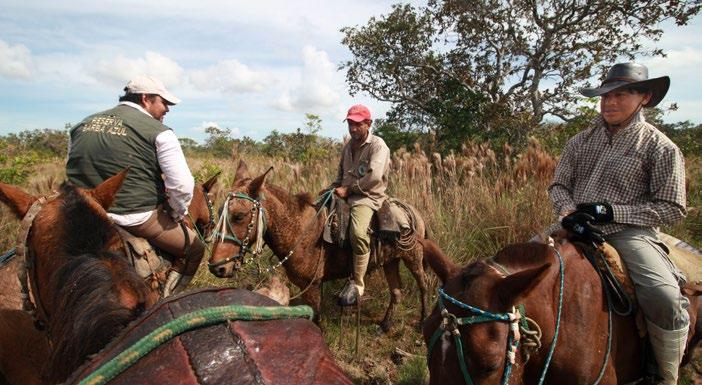
LARSI by the Numbers

Battling Blazes in Brazil
The Cantão ecoregion in east-central Brazil is where Instituto Araguaia, ABC, and others have worked to protect Araguaia’s 1,482-acre Cantão-Cerrado Corridor, which lies in the eastern buffer zone of Parque Estadual do Cantão. The corridor encompasses the last remaining intact lowland cerrado forests in the region, preventing them from being converted to soybean agriculture. The reserves within the corridor, known as Guaíra, Lago do Campo, and Canto do Obrieni, are the only strictly protected areas in the entire, vast lowland cerrado, but their protection requires constant vigilance by Araguaia in the face of recreational hunters, armed gangs of fish poachers, and, above all, the constant threat of fire. This is the land of the Vulnerable Kaempfer’s Woodpecker, which is declining throughout its small, fragmented range.
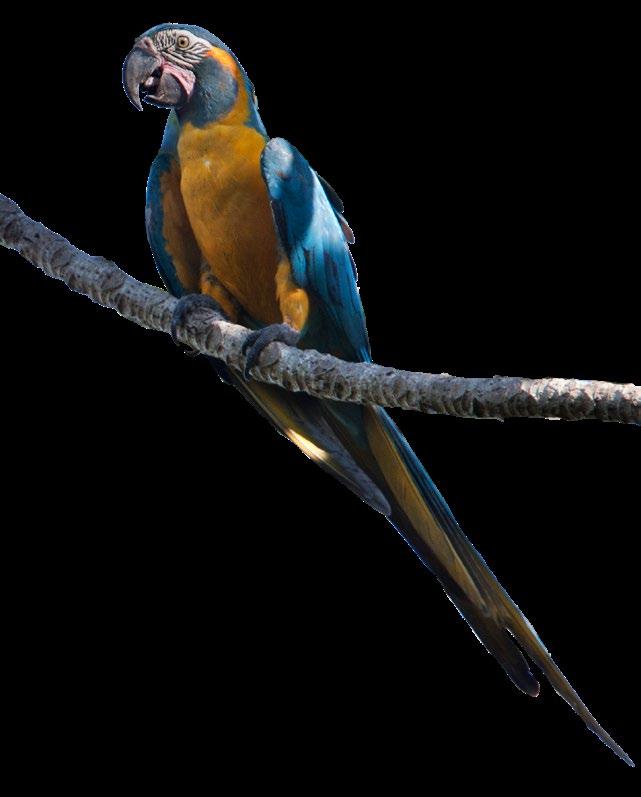
LARSI’s support of Araguaia began in 2021 and is now in its fifth year. Araguaia has used most of its funding for basic reserve needs (including guard salaries, patrols, and vehicle and other facilities maintenance), construction of a visitor center in the town of Caseara, an exchange trip during which Araguaia personnel visited other ABC-partner reserves, and development of ecotourism. However, LARSI support for fire management and prevention has arguably been the most dramatically impactful in
terms of protecting the reserves.
All fires that occur in this region are set by people, either accidentally or intentionally. During 2021 and 2022, Araguaia personnel created miles of fire breaks and conducted controlled burns, work that is a year-round commitment in the face of ever-worsening fire seasons. Also in 2022, PrevFogo, the firefighting agency for Brazil’s federal protected areas, prepared fire management plans for each of Araguaia’s reserves — work that LARSI funded.
In June 2022, Araguaia’s LARSI-supported fire preparation was put to the test with a fire that threatened the Canto do Obrieni Reserve and took the team three days to put out. On August 28, a fire started at a ranch bordering the Guaíra Reserve, and two days later, another fire moved into the area between Guaíra and Canto do Obrieni. Araguaia fought these fires continuously day and night for the next 12
Bolivia's Blue-throated Macaw is one of the Critically Endangered bird species that benefits from LARSI support.
days, until, with help from local ranchers, the Caseara municipal fire brigade, and PrevFogo, they were finally extinguished.
Following firefighting training from PrevFogo in 2023, Araguaia was again challenged in 2024, the worst year for fires in Brazil’s history. In August, Araguaia staff courageously fought and contained fires that repeatedly threatened the Guaíra Reserve, and again in September they confronted a large fire that came perilously close to the Lago de Campo Reserve.
Araguaia has not lost any reserve land to fire, thanks to support from LARSI for fire prevention and control. This is vitally important for Kaempfer’s Woodpecker, a bird that depends on tall dead nesting trees that would certainly be eliminated by fire in the cerrado forest. Doubly bad would be the loss of bamboo thickets upon which the woodpecker relies almost exclusively to forage for ant larvae.
As Araguaia’s leaders, Silvana Campello and George Georgiadis, explained: “With repeated uncontrolled fires sweeping through the entire cerrado region, such species will only survive in refuges where fires are kept out. This requires not large projects with an expiration date but moderate and reliable support, year after year, that enables an experienced and committed team to be built and maintained, fighting fires year after year for as long as there is no one else to do it. This is exactly the kind of support that LARSI has given Instituto Araguaia.”
Finding a Partner
A driving force behind LARSI is Ivan Samuels, MCF’s Executive Director. In 2014, Samuels had been on the board of Fundación de Con-


servación Jocotoco, one of ABC’s long-time partners in Ecuador, for six years. MCF had supported a range of needs at Jocotoco, from land purchases to core operations, and he noticed that many donors would support key land acquisitions but then move on, as if the work was done, when in fact it had just begun.
Knowing from his Jocotoco board experience what was involved in stewarding the land once acquired, Samuels worried that many NGOs in Latin America did not have the tools and resources to ensure long-term protection for their reserve networks. “We were already donors to ABC,” said Samuels. “I had a publication from ABC called the Latin American Bird Reserve Network, profiling the conservation investments ABC had made with many organizations across the region. That was the spark. I realized the network was a platform from which we could deploy resources across the NGO landscape to help partners in Latin America become more sustainable, adopt better financial controls and governance practices, and ultimately better manage their growing reserve networks. ABC was the ideal organization to implement such a
Workers with Instituto Araguaia in Brazil train to extinguish fires in 2023. A year later, they defended two nature reserves from large fires.
A Guide for Reserve Managers
In 2022, LARSI supported the publication of Sustainable Nature Reserves: Guidelines to create privately protected areas authored by Alberto Campos, Lucia Guaita, Bennett Hennessey, and Marc Hoogeslag and published by IUCN-National Committee of The Netherlands and ABC. Drawing on case histories and testimonials by experienced
in-country conservation practitioners, the 108-page document addresses key challenges to reserve management, such as cost control, engaging communities and other stakeholders, and many others. The publication is available for download at abcbirds.org/SNRGuide
program because they already had established relationships with these partners.”
The LARSI program follows a re-granting model: MCF provides funding to ABC. ABC requests proposals from partner organizations in which the partners identify strategies and actions to make their organizations and reserves more secure. ABC then enters into direct agreements with 10 or more partners each year to help partners address their needs.
It’s a powerful multiplier for MCF, allowing it to support more organizations than it could on its own while taking advantage of ABC’s ability to work one-on-one with each grantee, often matching with additional funds raised from other sources for specific projects. For ABC, it provides a steady stream of support for a wide variety of partners, and partners often stay in the program for multiple years, giving them the ability to address complex problems or develop programs in phases until they reach fruition.
Partners that leave the program after one or more years of support can return to LARSI to address new challenges. Said Amy Upgren, ABC’s Director of International Programs and LARSI program coordinator, “We’ve had partners receive LARSI funding for up to 10 consecutive years, and, at any given time, we have up to 14 partners working on their own specific projects in support of reserves that we have invested in. Working with so many partners on many different issues at once is amazingly powerful and rewarding.”
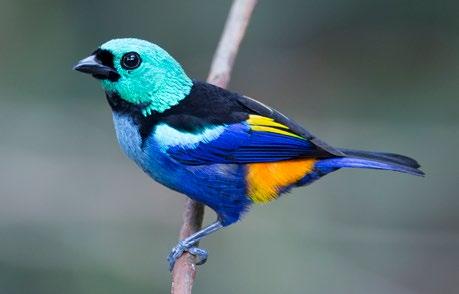
Upgren added, “Another important role that ABC fills in the LARSI program is that of facilitating connections between partners, especially those facing similar challenges. We have funded partner visits to other LARSI-supported reserves, which have led to idea exchanges across partners and countries,” noting that ABC hosted a partner summit in 2019 in Virginia and is planning another in August in Colombia.
Looking Ahead
The wide variety of projects, personnel, and challenges that have been addressed with LARSI support is a testament to the complexity of protecting land for threatened bird species and other wildlife. “We fund things that are hard to fundraise for,” said MCF’s Samuels, “things that other donors may not find exciting. But through critical thinking with our partners, these investments can jumpstart whole new opportunities in fundraising, ecotourism, or communications. It’s rewarding when we help fund a new position and that person becomes a critical part of their team, leveraging new sources of support, bringing in new partners, and effectively making their organizations more sustainable. Sometimes it takes years for the full impact to be realized, but we’ve paved the way for success.”
Daniel Lebbin, ABC’s Vice President for Threatened Species, added: “LARSI represents the best kind of collaboration in fundraising and conservation. We are more confident in creating new reserves, knowing we have the potential of LARSI support for those areas in their early years and for local conservation groups to lead this global effort in their countries. We are grateful to March Conservation Fund for the partnership, and we look forward to continuing to foster lasting conservation results together.”
George E. Wallace recently retired after 18 years with ABC. In that time, he served as Vice President for International Programs, Vice President for Oceans and Islands, Chief Conservation Officer, and Director of International Programs and Partnerships. He is now an ABC Ambassador.
The spectacular Seven-colored Tanager of eastern Brazil is a focus of conservation work by SAVE Brasil, a group supported by LARSI.
Instituto Araguaia (left), Ciro Albano (above)

Filling the Gaps
ABC research shows which Latin American birds lack protected habitat — and how much must be conserved to prevent their extinction
by Molly Bergen
Atop a windswept island in the sky in southwestern Ecuador, a bird with a startlingly blue throat and teal cap flits among the bright orange blossoms of chuquiragua shrubs. The bird nests under rocky outcrops and in caves, its alpine habitat isolated from the rest of the Andes by deep arid valleys. Only described to science in 2017, the species was named the Blue-throated Hillstar, and at the time, its entire home was outside any kind of nature reserve. Conservationists were concerned that various threats — fires set to encourage cattle grazing, planting non-native pine trees for
timber, and other practices — might inadvertently cause the bird’s extinction.
The hillstar was assessed as Critically Endangered due to these habitat risks, combined with a small population estimated at only 80–110 mature individuals. Since then, Fundación de Conservación Jocotoco (with support from American Bird Conservancy) has acquired and protected 1,520 acres of the species’ habitat in the Cerro de Arcos Reserve (home to about 32 hillstars) and engaged local communities in conserving an additional 2,686 acres of adjacent land for the bird.
A Blue-throated Hillstar feeds on a chuquiragua flower. The Ecuadorian endemic hummingbird will benefit from a new study about rare birds and their habitats.
Within Jocotoco’s Cerro de Arcos Reserve, managers are working to improve habitat by planting chuquiraguas — one of the bird’s main sources of food. By conserving the hillstar’s habitat, Jocotoco and neighboring communities are giving the bird its best chance at long-term survival. But how much habitat is needed for the hillstar, and what about other species in similar peril?
Habitat is Key
Birds need habitat to thrive, and the loss and degradation of habitat is the main driver endangering bird species with extinction today. Habitat loss is particularly acute in the American tropics, where lots of bird species (many of which have small ranges) face severe pressure as natural vegetation is converted to farms, pastures, or other uses. For decades, ABC has worked with local conservation organizations to establish, expand, and steward bird reserves, with a goal of preventing bird extinctions. (Read more about reserve management, page 18.)
“Most of the threatened birds of Latin America are facing habitat loss,” said Daniel Lebbin, ABC’s Vice President of Threatened Species. “Protecting habitat is the most important thing we can do to help ensure their survival.”
To prevent the extinction of Latin America’s most threatened birds, ABC aims to ensure that each of the species most at risk has at least one well-managed protected area that safeguards a minimal amount of habitat sufficient for survival. Accomplishing this requires asking (and answering) questions like the ones asked about the Blue-throated Hillstar: How much is enough? Which bird species continue to lack sufficient levels of protected habitat, how much additional habitat protection do these species need, and where could new reserves be located to most efficiently fill these needs?
The answers came in the form of ABC’s “gap analysis,” a new study by ABC scientists (available at biorxiv.org and abcbirds.org/GapAnalysis), that mapped the habitat of 149 of the most threatened species in Latin America and overlaid those maps with existing reserves — providing an estimate of how much habitat was protected. Remarkably, the majority of species met their minimal protection goals. For the species that are under-protected, less than 0.1 percent of the overall Latin American landscape would need to be protected to achieve the targets. The fact that we can prevent many extinctions by protecting a small, strategically selected amount of land is encouraging to conservationists.
The Blue-throated Hillstar’s range in Ecuador’s Cerro de Arcos is a windswept habitat known as páramo, an Andean ecosystem of boggy grass and shrublands studded with evergreen plants, mosses, and cacti.

Michael Moens
Mapping Goals
Most field guides to bird identification have range maps for each species, and the world’s protected areas are mapped online at the World Database of Protected Areas, so it would seem easy to overlay these maps of birds and reserves to see which species fall outside the existing reserve network. In fact, it was not so simple!
One problem was that existing maps were not precise enough, and taking them at face value could mean falsely predicting that birds were protected in reserves that did not actually support their habitat. So, ABC researchers looked at the most threatened species from Mexico through South America (excluding the Caribbean) ranked by the IUCN Red List of Threatened Species as Critically Endangered, Endangered, and Vulnerable (for the latter category, using the most stringent criteria of having populations less than 1,000 individuals or small ranges under 20 square kilometers). This resulted in the set of 149 species (after excluding a few species that had not been observed in at least a decade and a seed-finch with unclear taxonomy).
They then re-mapped the habitat for each of these species. The 149 birds identified in the study were nonmigratory, which isn’t surprising. “Resident species tend to have more restricted distributions than migratory species and, therefore, are more prone to be impacted by threats,” said Marcelo Tognelli, an International Project Officer for ABC and the lead author of the study. To create the most accurate

maps possible of each species’ habitat, the ABC team started with existing range maps, added information on occurrences from eBird, and trimmed the maps to the appropriate habitat and elevation range of the bird. The resulting maps (called Areas of Habitat) were much more precise and suitable for further analysis.
Equipped with improved maps, the team overlaid the boundaries of existing protected areas to assess how much habitat (if any) of each species is currently inside reserves. “This gave us a more accurate picture of how much protected habitat each species currently had, but we still needed to understand if that protected area was sufficient to support the species,” Tognelli said.
To determine if the amount of habitat inside existing reserves was “enough,” the researchers set minimum conservation targets for each species using two methods:
First, they set a population-based goal to protect enough habitat to support 1,000 mature individuals (or the bird’s total population if less than 1,000) by multiplying the population number by an estimate of their average territory size. This minimal target, designed to safe-

guard against the highest risk of extinction, relies on the assumption that the birds actually are present within the mapped habitat.
Second, to be a bit more cautious and to help ensure longer-term conservation success, the researchers estimated another target based on the percentage of habitat protected. It uses a sliding scale aimed at protecting 100 percent of habitat for species with the least habitat remaining (under 50 square km), and then decreased it to a minimum of 4 percent for the species with the largest amounts of habitat (20,000 square km and up). This approach
Jaqueira Silvia Linhares (top), Ciro Albano (middle)
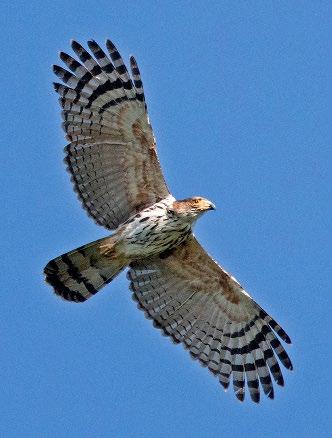

A Few Species Most in Need
— conserving a small amount of a species’ large range — is not uncommon for conservation biologists and amounts to a lot of acres as a protection goal.
Finally, ABC scientists identified priority areas for conservation by looking at where suitable habitat exists for the target species outside of protected areas. Using a “prioritization analysis” method, the researchers determined which areas, if protected, would conserve the habitats of multiple threatened bird species to most efficiently meet the goals of all species.
Of the 149 species assessed, 93 percent met their population-based target needed to prevent their imminent extinction. Only 10 species fell short (see list, page 30). Five are hummingbirds, including the Blue-throated Hillstar that Jocotoco and ABC are working to protect.
“Hummingbirds are extreme when it comes to being a bird, in every way,” said Lebbin. “They’re some of the smallest birds. They have the fastest metabolisms. They have lots of extreme aspects of their biology, but part of this is that they also have a lot of endemism, a lot of smallrange species.”
Such small ranges can make species especially vulnerable to habitat
Future Studies Planned
While the new study described in this article is a significant step forward for conservation in Latin America, the authors note that additional research is needed to paint the full picture of threatened birds in Latin America and how best to protect them. Next steps include feasibility studies to develop projects to
loss due to human activities. Take the Chilean Woodstar, a hummingbird native to northern Chile in one of the world’s driest deserts. “The region looks like a moonscape,” Lebbin said, “but then you have these stream valleys that bisect this arid desert, and in the ephemeral streams, there is vegetation. That’s where this hummingbird lives, at the most extreme end of where a hummingbird can survive. And of the four main valleys in Chile where the species was once found, the northern two have been almost completely converted to enclosed greenhouse agriculture. So now the Chilean Woodstar survives only in the two southernmost valleys. We’ve worked with local partners to protect some small refuges there, but it’s very challenging because the areas along the streams are the only arable lands for miles around. So
establish and expand new reserves to cover species not meeting their targets in Latin America. They also want to extend this study to the Caribbean, where they will need to use different kinds of targets and habitat mapping methods due to regional differences from the mainland.
Rare birds from Brazil that stand to gain from the study include Pernambuco Foliagegleaner (lower left), Orange-bellied Antwren (upper left), White-collared Kite (above), and Alagoas Tyrannulet (upper right).
Ciro Albano (left), Gabriel Caram (right)
Situation Critical
An ABC analysis found that these 10 Latin American bird species fall short of targets for their population and protected habitat to prevent extinction. A further 54 species do not meet habitat targets, resulting in a total of 64 top priority bird species. See the full list at abcbirds.org/GapBirds
the land prices are very expensive.”
(Read more about the woodstar in “Bird Calls,” page 12.)
For the area-based targets, 64 species — including the 10 that don’t meet the population-based target — did not meet habitat protection goals. Most of these species are found in Mexico, Colombia, Ecuador, Peru, and Brazil, and smaller numbers are in Panama, Venezuela, and Chile.
As for priority conservation areas, the researchers identified about 6,300 square miles (16,360 square km) as most critical to conserve these 64 species — an area that collectively is only 0.1 percent of the overall Latin American landscape, nearly the same size as the land area of Hawai‘i.
Many of the priority areas for protection are quite small. For example, the research found that Ecuador’s Blue-throated Hillstar could likely avoid extinction if an additional 157 acres of its habitat were protected. (More is better, of course!) Another priority conservation area can be found in northeastern Brazil — an unprotected 13,000-acre forest near the town of Murici in the state of Alagoas. Protecting this forest would help conserve nine bird species that do not meet their minimum conservation targets by adding an average of 11.1 percent to their collective Area of
Mexico: Short-crested Coquette, Oaxaca Hummingbird
Ecuador: Blue-throated Hillstar, Lilacine Amazon, El Oro Parakeet, Pale-headed Brushfinch
Peru: Gray-bellied Comet, Marañón
Antshrike, Little Inca Finch
Chile: Chilean Woodstar
Habitat. (The nine species are Forbes’s Blackbird, Pernambuco Foliage-gleaner, White-collared Kite, Scalloped Antbird, Alagoas Antwren, Alagoas Tyrannulet, Pinto’s Spinetail, Orangebellied Antwren, and Long-tailed Woodnymph, which are all classified on the Red List as Vulnerable, Endangered, or Critically Endangered.)
Protecting the prioritized habitats required to conserve the 64 species would do much more than benefit birds: The sites overlap significantly with habitat for other threatened species. For example, the priority areas overlap with 108 Key Biodiversity Areas and 29 Alliance for Zero Extinction sites, which highlight the importance of
these areas for threatened amphibians, reptiles, mammals, freshwater fish, and other species found nowhere else.
Progress is Achievable
While the study highlights remaining conservation needs, it also highlights progress already made. As mentioned, of the 149 species assessed, 93 percent met the population-based target to prevent their imminent extinction. But even when the more cautious, area-based target is applied, more than half (57 percent, or 85 of the 149 species) already have sufficient protected habitat to meet the goal. Conservation of these exist-

Stephen Jones
The Long-tailed Woodnymph of eastern Brazil may gain more habitat thanks to the recent study.

ing reserves must be maintained, but “it might be surprising that the news is so positive,” Lebbin said.
Conservationists have made great progress to bring some birds back from the brink, and those efforts continue. ABC has already supported 55 Latin American partners to establish or expand 120 protected areas spanning over 1,140,000 acres in 14 Latin American countries — benefiting many of the Americas’ most endangered birds.
In one heartening highlight, ABC has worked with Fundación de Conservación Jocotoco in southern Ecuador to expand the Yunguilla Reserve for the Pale-headed Brushfinch. With a global population of about 240 birds, the reserve protects 204 individuals. Thanks to these effective efforts, the species was downlisted in 2011 from Critically Endangered to Endangered. “When this brushfinch was first rediscovered in 1998, after 29 years of no documented observations, there were thought to be only 5–15 pairs in the Yunguilla Valley,” Lebbin said. “Now,

through land purchases, managing reserves, Jocotoco's efforts to control other threats, that small population initially protected by the reserve is growing and expanding beyond its boundaries — prompting a need to conserve more land.”
“The gap analysis study confirms that ABC and our partners are already working to conserve habitat for many of the species that need it most. For these species, we just need to keep protecting a bit more habitat,” Lebbin added. “We can begin to provide protective coverage for all the species prioritized if we maintain our current efforts and add three more species per year for the next 10 years. This is a lot, but it’s very doable if sufficient funding becomes available.”
ABC is already stepping up to meet this need and will launch new habitat protection projects this year to conserve habitat for underprotected species. For example, in a new project launching this year, ABC and partner CONBIODES will work with Indigenous communities to establish voluntary reserves for the Oaxaca Hummingbird — a species new to ABC ’s conservation efforts and one that is almost entirely absent from existing reserves.
Similarly, in Peru, ABC will soon work with Nature and Culture International-Peru to manage and establish protected areas for birds endemic to the Marañón River valley, including the Little Inca Finch and Marañón Antshrike.
With dedication and sufficient resources, minimum habitat targets can yet be met for the 64 species most in need of conservation. That’s the good news. “We know what the species are, and we know where to find them.
We know what habitat to protect to ensure their future,” said Tognelli. “That’s the power of this research. All that’s left is to secure the funding and political will to do the work.”
Molly Bergen is a freelance writer and editor with more than 16 years of experience writing about climate, wildlife, and community-based conservation. Learn more about her work at molly-bergen.com.

If you (or someone you know) wants to support the work to secure and expand ABC’s network of reserves, please contribute to our Bird Habitat Protection Fund. abcbirds.org/BHPF
Species that currently fall short of targets for population and protected habitat include Chilean Woodstar (left) and Pale-headed Brushfinch (right).
Rich Lindie/Shutterstock (left), Ramiro Mendoza (middle)

Celebrating Andean Gems
New book immerses readers in spectacular hummingbirds, flamingos, and more feathered showstoppers by Matt Mendenhall bird photos by Owen Deutsch
When a pair of Red-fronted Macaws nuzzled each other at a Bolivian sanctuary, one bird gently raising its large foot toward its mate, photographer Owen Deutsch recorded the moment with his camera. The stunning interaction is tempting to anthropomorphize.
Red-fronted Macaws at the aptly named Red-fronted Macaw Reserve in Bolivia.

Even without assigning human emotions to the scene, however, the photograph still represents a dramatic story. This rare macaw only inhabits part of south-central Bolivia in a desert-like landscape with rocky terrain, and scrubby, thorny vegetation. The species is Critically Endangered due in part to past trapping for the pet trade. Fewer than 800 wild individuals exist, so it’s special to get a glimpse, through Deutsch’s lens, of a pair strengthening their bond in possible preparation for nesting.
The photo (at left) is one of a couple of hundred taken by Deutsch that are on display in the new book Birds of the Tropical Andes, published in July by Princeton University Press. Along with the images is in-depth text and detailed photo captions written by Michael J. Parr, ABC’s President. The coffee-table-style book measures nearly 12 x 10 inches and feels hefty in the hand.
Parr and Deutsch previously worked on the 2019 volume Bringing Back the Birds, a similarly sized book featuring photos of species from throughout the Americas, and including essays about bird migration, conservation, and other topics. Birds of the Tropical Andes, as its title implies, focuses on most of western South America and its avian jewels. Spanning more than 4,300 miles, the Andes are the world’s longest continental mountain range and home to some of the planet’s most magnificent birds, from the striking Sword-billed Hummingbird to the fabulous James’s Flamingo.
“The region has the two countries with the most bird species on the planet — Colombia and Peru — and then Ecuador and Bolivia are not far behind,” Parr said. “There are a few reasons why you get such bird diversity. The tropics have a 12-month growing season. It�s wet and
humid, so you get year-round plant growth and year-round insects. So you have abundant food for birds and for wildlife that birds feed on, like lizards, snakes, and small mammals.
“Then you add an amazingly diverse topography created by the mountains and valleys running east-west and north-south,” he explained. “Dispersal is limited for specialized species that depend on, for example, one type of flower that only grows at a certain elevation, and when you limit dispersal, you end up with speciation taking place because birds, lizards, and other species become confined to one area or one altitudinal belt. Genetics then concentrate certain traits in these isolated populations, and you get this amazing, vastly biodiverse region.”
No wonder that the tropical Andes are one of the most biodiverse hotspots on the planet and home to more than 1,700 bird species a third of which are found nowhere else on Earth.
Inspiration in Ecuador
Parr has been a birder since age 7 and has worked in bird conservation since 1989. He has birded throughout the Andes for decades and knows the birds of the region — and the challenges they face — in great detail. Deutsch, a former fashion photographer, has been


Co-authors Michael J. Parr (left) and Owen Deutsch

photographing birds since 2002. He has traveled the globe, building an incredible portfolio (and a dedicated social media audience). Shortly after completing Bringing Back the Birds, the two were traveling together in Ecuador when inspiration struck.
“We had the idea for the book when we were on one of our many long drives in Ecuador on our way to a birding location to get some photographs,” Parr recalled. “And we realized we�ve got a lot of good pictures, so maybe it was time to do a book on the birds of this region.”
After the spark, the pair assembled a small team and planned a series of photographic and research expeditions to the region: one to Ecuador and two each to Peru and Bolivia.
“One of the main highlights for me was the work we did in the high Andes, in the Altiplano, particularly in Bolivia,” Parr said. “One of the places we visited was Laguna Hedionda, in the high plains of
Bolivia. It’s an area of salt flats and small lakes, with altitudes around 13,500 feet. And it’s a fairly barren landscape, but it’s got really amazing birds. Definitely the highlight there is the flamingos, which nest on the high-altitude lakes in that area.”
Incredibly, three of the world’s six flamingo species — James’s, Andean, and Chilean — all breed in the area. “It’s a spectacular, otherworldly environment,” Parr added. “I strongly recommend it as a great place to go and not only to see, but to photograph these flamingos up close.”
Deutsch said no matter where he and Parr visited, he felt like he “was a kid in a candy store. Everywhere we looked, the birds were just incredible — so colorful — and we were just giddy the whole time.”
His hope for the book is that readers “fall in love with the region and with these gorgeous creatures. Because they have to be saved for my grandchildren, for everybody.”
The Andean Ibis, found from Ecuador to northern Chile, is one of three ibis species in the high altitudes of the tropical Andes. A good place to look for it is Ecuador’s Antisana Ecological Reserve.
Targets and Surprises
The authors and their two main collaborators — birders Nathan Goldberg and Juan Carlos Crespo — organized their expeditions around finding target species, flamingos, macaws, hummingbirds, and other showstoppers, at certain times. And like any birding trip, they encountered many more species along the way.
“There’s always a supporting cast,” Parr said, “and you never know what it’s going to be. You have an idea, but you never really know if you’re going to find a Common Potoo or you’re not (for example). It’s a fairly common bird, but actually finding one is hard. And with some of the skulking birds like Ocellated Tapaculo, you’re wondering if they’ll reveal themselves. There’s always something that scoots away, and then there’s always something that is a nice surprise.”
The team also wound up in some not-so-nice surprises a couple times. At one stop, a member of the group had a medical issue, “and we had to evacuate and regroup, and then change the whole schedule.” In the end everyone was fine, but it meant that the itinerary had to shift, and quickly.
Another sticky situation happened in the Peruvian Amazon, at a site where macaws gathered at a clay lick that the team had accessed by boat.
“We were waiting at the clay lick at dawn for the parrots to show up, and of course, they didn�t show up,” Parr recalled. “Eventually they showed up at midday, which we com-
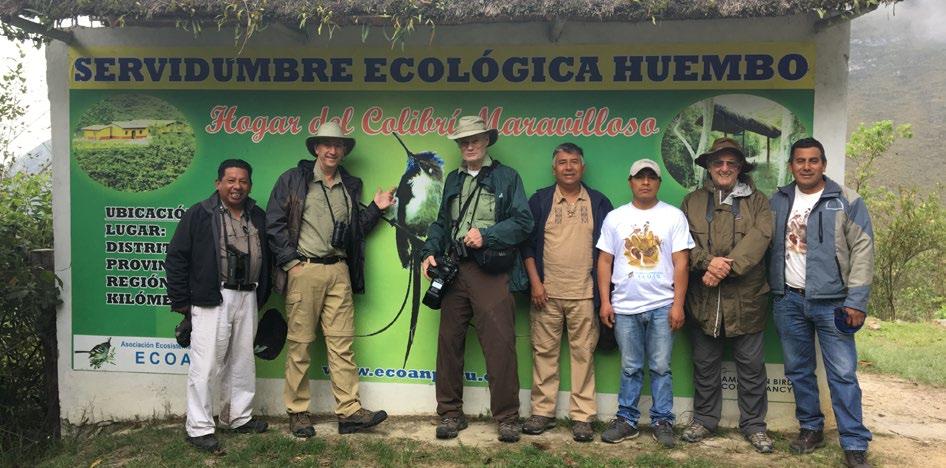
pletely didn’t expect. Then right after that, it started raining, and the rain became absolutely torrential and went on for about 12 or 14 hours. So by the time we left, the river, which had been fairly calm as we came in, had turned into a monstrous torrent. Whole trees that had been uprooted were going down the river, and we had to navigate this giant whitewater river in a smallish boat. So that was a little hair-raising, but we got out of there alive!”
Supporting Local Partners
Parr wrote the bulk of the book’s text, and he asked a few others to contribute as well. Birding tour leader and author Álvaro Jaramillo penned the foreword, and four ABC partners from the Andes — Rodrigo W. Soria Auza, Constantino Aucca Chutas, Sara Inés Lara, and Martin Schaefer — added personal essays as well. The essay writers each represent organizations with which ABC has

helped to establish bird reserves in the tropical Andes that are critical to conserving rare birds like the Red-fronted Macaw and Marvelous Spatuletail. “Habitat loss by far is the biggest threat to the region’s biodiversity, but by visiting the Andes and the reserves ABC set up with local partners, you can really do a lot to help bird conservation and local communities,” Parr said. In total, ABC and partners have protected over 1 million acres in bird reserves
Top While working on the book, the authors met up with friends at the Huembo Reserve, home of the Marvelous Spatuletail, in northern Peru. From left to right: Constantino Aucca Chutas, President of ECOAN (Asociación Ecosistemas Andinos); ABC President Michael J. Parr; photographer Owen Deutsch; Hector Peñaranda of Chilean nonprofit CONAF (Corporación Nacional Forestal); Santos Montenegro of ECOAN; Stuart Pimm, the Doris Duke Chair of Conservation Ecology at Duke University; and Dennis Poclin Valle of ECOAN.
Middle The striking Plate-billed Mountain Toucan is a resident of cloud forests in Colombia and Ecuador. A reliable spot to view and photograph it is The Birdwatcher's House near Mindo, Ecuador.
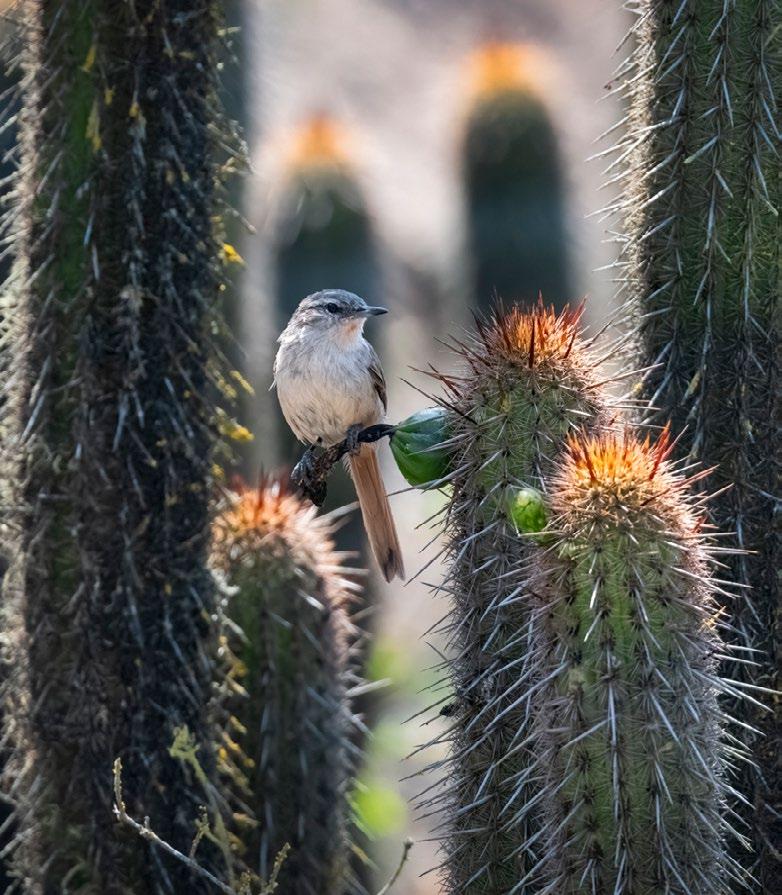
across the Americas, providing habitat for over 3,000 bird species.
Parr noted that Birds of the Tropical Andes is “a book that we created from the ground up based on our field experience in areas where ABC and its partners work.
“It ’s designed to encourage people to go to the tropical Andes, to go birding, to enjoy birds and bird photography, and to support conservation. If you visit our partners’ reserves and stay at the lodges, you
will already be contributing to help protect these birds.”
The book’s format also called for technical expertise and an artistic eye, and Parr praised Deutsch’s skills on both fronts. “Owen did the bulk of the work on the photography,” he said “Not just taking the pictures but organizing the pictures. A huge amount of detail goes into that.”
Parr has taken photos of birds for many years, including on his trips with Deutsch. But he noted the
differences in their work. “While I took a picture of the bird, Owen was creating a photograph. It’s a different mindset. He’s thinking about backgrounds and lighting. It’s a different discipline. I’m learning, but Owen is still the master of that.”
Parr wrote much of the text with traveling birders in mind based on fieldwork in Bolivia, Colombia, Ecuador, and Peru, including 30 expeditions to the region over more than 20 years. He includes detailed
The Cactus Canastero is endemic to the western slope of the Andes in Peru, where it inhabits montane scrublands with columnar cacti and bushes. This photo was taken at Lomas de Asia, southeast of Lima.

explanations for where to bird in certain areas and which species to seek out. And he shares natural history, cultural history, and conservation information, as well as the latest findings from the field.
Birders visiting the Andes for the first time may be stunned by the diversity of species. Parr’s advice: Soak it in and enjoy!

“I think the hummingbirds in general are one of the biggest highlights because there are so many species (at least 140). They have so many colors and so many different shapes, and they also come very close, often with feeders that are now at many of the lodges. We have some hummingbirds in the U.S., but when you get to the Andes, you’re just going to be
Humboldt Penguins are found along coastal sites from central Ecuador to southern Chile. The Ballestas Islands off the coast of Paracas National Park in Peru are a wonderful place to see the penguins and other seabirds.
About the Book
Birds of the Tropical Andes by Owen Deutsch and Michael J. Parr.
Foreword by Álvaro Jaramillo. Contributions by Rodrigo W. Soria Auza, Constantino Aucca Chutas, Sara Inés Lara, and Martin Schaeffer. Hardcover, 2025, 264 pages, 200+ photos, size: 11.75 x 9.75 inches.
Watch our recent webinar with Deutsch and Parr: abcbirds.org/AndesWebinar
drenched in all the different species and colors. It can be overwhelming at first, but slowly you’ll get used to the species and then start to see some of the rare ones. And it’s just super fun. I was initially daunted by the overall diversity of Andean birds, but once I realized that I didn’t have to try to identify them all at once, and just started to enjoy them, that’s when the fun began!”
Matt Mendenhall is ABCʼs Managing Editor. He has been writing and editing articles about birds and nature for nearly 25 years.
Learn more about photographer Owen Deutsch at owendeutsch.com and follow him on Facebook and Instagram.
@OwenDeutsch
@OwenDeutschPhotography

Support ABC with a gift of $50 or a new monthly gift of $10 or more to receive the book! Scan the code or visit abcbirds.org/BOTTA to order today.
Together for Birds

Forming Kinship with Seabirds
by Molly Toth, Writer/Editor
Over thousands of years, humans and seabirds have forged a bond, bound by wind and waves, salt and sand. Seabirds were our stewards as humans ventured out into the vast unknowns of the ocean. Keen sailors caught fish by following the birds in flight to currents teeming with aquatic life. Those same sailors were shepherded back to shore by seabirds, guided home by birds returning to land, and maritime cultures were built around the bounty that seabirds brought.
Today, unfortunately, seabirds are the most endangered group of birds, and as populations have dropped, our connection to seabirds has frayed. But unlike fish, dolphins, and other animals that live in the ocean, humans and seabirds share the perspective of observing the ocean from above. Just as communities throughout history understood seabird nests (or their absence) as signs of resource abundance or scarcity, scientists today monitor seabird breeding productivity as an indicator of ocean health, and so we’re keenly aware of threats the birds and the waters they inhabit face.
Our kinship with seabirds has long fascinated Sea McKeon, our Marine Program Director. In early 2024, he envisioned a project within ABC’s Conservation and Justice Fellowship Program to expand how we approach and communicate these relationships.
After a competitive application process, McKeon and Naamal De Silva, who leads the fellowship program,
ultimately selected Veronica Padula as ABC ’s Seabirds and Stories of Multi-Species Kinship Fellow. A biologist drawn to Alaska by its seabirds more than 15 years ago, Padula is the Chief Science Officer of the Bering Sea Research Center, led by the Aleut Community of St. Paul Island Tribal Government. In her role as a Fellow, she has stewarded the work of a cohort of five Together for Birds Storytellers, all recipients of grants from ABC, to strengthen connections among seabird conservationists, engage a broader audience in supporting seabird conservation, and create spaces to continue sharing stories of seabird kinship from communities across the Western Hemisphere. Here’s a brief introduction to their work.
Celebrating Connections
aliana ho, a predator-control technologist working to steward ‘A‘o (Newell’s Shearwater) and ‘Ua‘a (Hawaiian Petrel) colonies, was born and raised on the island of Kaua‘i. Through a series of community workshops featuring cultural practitioners, ho and her mother, Kathleen, are creating an 80-foot-long mosaic mural to be installed at the Kīlauea National Wildlife Refuge. Called Ka Pae ‘Āina o Hawai’i Nei, the mural maps the submarine topography of the entire Hawaiian island chain. The mosaic includes constellations used in traditional navigation and native seabirds, celebrating interconnectedness and community across all of Hawai‘i’s islands.
Humanity’s fascination with seabirds runs deep. This painting, Cormorants Catching Fish by Japanese artist Kamashiro Yuhi, dates to 1755.
A Reimagined Atlas
Seabirds and humans have been intimately connected for as long as they’ve both explored the waters of the Gulf of Maine, where Alice Hotopp sets her Atlas of Kinship, a reimagining of traditional scientific atlases. Through short essays, Hotopp weaves a tale of seabird-human connections, from the time of the Indigenous Wabanaki, to the arrival of European colonists, to contemporary efforts toward collaborative stewardship. For example, the return of Atlantic Puffins to once-abandoned colonies is one of the conservation movement’s modern-day triumphs. The essays in the atlas are connected to Hotopp’s recently completed doctoral research on the evolutionary ecology of tidal marsh sparrow plumage. Each vignette is brought to life by seabird field biologist and artist Coco Faber’s artwork.
The Power of Play — and Pelicans
When a summer of surfing was waylaid by a devastating oil spill, the girls in Emi Koch’s surfing summer camp had no choice but to take a cue from the pelicans they watched from the shore: Rather than fight the changing winds, they chose to make the most of them and change direction. Koch leads Coast 2 Coast, a nonprofit in Lobitos, Peru. She guided the girls in creating a stop-motion animation about their experience and the resilience of an imaginary squadron of pelicans that use their “built-in swim goggles” (the nictitating membrane, or third eyelid) to dive underwater and locate the source of the oil spill. The girls were able to grapple with an environmental crisis in real time and draw on the power of play to spark their learning and advocacy.

Gathering Stories in Ecuador
Inspired by the stories of her abuela’s (grandmother’s) homeland of Ecuador, María Isabel Dabrowski focused her master’s research on the artisanal fishers along the country’s coast. Throughout 120 interviews, Dabrowski and her team gathered not only data on fishers’ experiences of conservation initiatives, but also the evolution of fishing culture, their ideas for reducing seabird bycatch, and how they relate to marine wildlife, including seabirds. And they collected stories of the deep connections these artisanal fishers have to their community, including the seabirds that fish among them and share the waters off Ecuador’s coast. Now, Dabrowski is weaving these stories together, producing an account of the fishers’ lives and relationships to the marine environment. Her ultimate hope is that the fishers’ stories help inform future conservation decisions, thus elevating their voices.
Helping Tribes Tackle Avian Flu
Quite often, seabirds act as environmental sentinels for humans. Sick birds can help alert people to emerging challenges, and that has been true during the recent wave of avian influenza around the world. The illness has upended farming practices, raised prices, and caused uncertainty and fear. And in some communities, the challenges of avian flu are felt more acutely and differently. April Richards recognized a need for resources specific to Tribal communities and, working with the Native American Fish and Wildlife Society, developed the Tribal Avian Influenza Resource Hub. The hub offers resources to support Tribal communities in responding to avian influenza, focusing on wildlife management, community health and education, hunting and harvesting, poultry and livestock care, and cultural practices, with resources specifically created for Alaska Native communities.
ABC is grateful to Padula for guiding such an inspiring group of women in sharing stories of kinship with seabirds from coastal communities throughout the Western Hemisphere.

Enjoy our recent webinar, “A Sailor’s Valentine: Stories of Kinship with Seabirds” at abcbirds.org/JulyWebinar
Peruvian Pelican
Greg Homel/Natural Elements Productions
Bird Hero

While the hungry herons of his childhood sparked his early interest in birds, he credits several mentors who enabled that curiosity to grow into a career.
When he was in high school, a local birder, Joan Brigham, took Ewert and another young birder, Phil Cantino, on birding outings with a local Audubon chapter, and when Ewert enrolled at the University of Michigan, she introduced him to faculty members and graduate students based at the university’s Museum of Zoology. “I had a really special time as an undergraduate because I had that experience, meeting these students and learning about their research and how bird collections are curated,” he recalls.
One of the graduate students, Frank Gill (who would later write the seminal textbook Ornithology), recommended that Ewert apply for an undergraduate
Dave Ewert: A Champion for the Rarest Warbler
by Matt Mendenhall, Managing Editor
When Dave Ewert was 7 years old, he often fished with his grandparents, who lived on a lake in southern Michigan. They kept some of their catch in a fish box to prepare for later, and Ewert’s grandfather pointed out to young Dave that a few herons “would look at the fish box very intently.”
He soon learned the differences between Great Blue and Green Herons, “and that got me birding from there. It’s been going ever since.”
Today, after more than 50 years as an ornithologist and conservation biologist, Ewert is best known among bird scientists for his work studying the rarest migratory North American songbird, the Kirtland’s Warbler. In the early 2000s, he co-led a team that began to unravel the mysteries of the warbler’s nonbreeding range and habits — a critical step for conservation of the species.
training program at the American Museum of Natural History in New York. From there, he met his academic advisor, Wesley Lanyon, who suggested that he study bird song in graduate school. That led to his dissertation on song variation and learning in the Eastern Towhee.
After earning his Ph.D., Ewert spent 35 years in various roles with The Nature Conservancy (TNC), including positions in Iowa and Michigan and as the Senior Conservation Scientist in its Migratory Bird Program. During his time at TNC, he worked on the conservation of stopover sites for birds around the Great Lakes, helped con-
duct a study that identified and characterized all islands in the Great Lakes, and developed plans for private companies’ forests so they could manage birds of conservation concern.
In the early 1990s, when Ewert was with TNC in Michigan, he and a few partners began to focus on studying the Kirtland’s Warbler, which at the time numbered just a few hundred birds and nested only in Michigan. The partners recognized the need to study the bird on its nonbreeding grounds in The Bahamas because little was known about its nonbreeding locations and habitats.
Ewert soon teamed up with Joe Wunderle, Jr., a longtime friend who

Ewert speaks at a workshop in The Bahamas in 2013.
ABC and Bahamas National Trust staff at a 2023 meeting included BNT's Falon Cartwright (left); ABC's Dave Ewert, Steve Roels, and Shawn Graff; and BNT's Jenny Morris, Demonica Brown, Lakeshia Anderson-Rolle, and Ancilleno Davis.
Courtesy Dave Ewert (top), Bahamas National Trust (bottom)
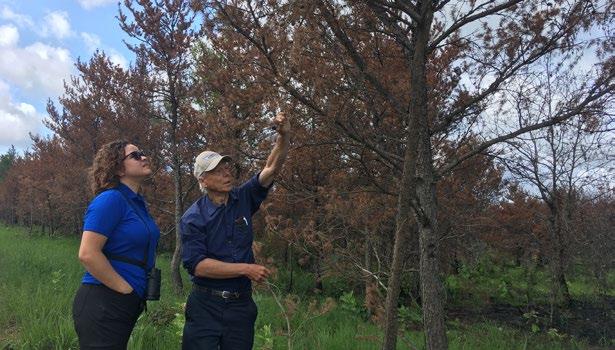
researched Caribbean birds for the U.S. Forest Service, and they decided to approach colleagues in The Bahamas about creating a collaborative program to study the warbler. Everyone agreed, and they developed a research plan to look for the bird on Andros, an island dominated by Caribbean pines, because at the time, researchers thought the bird wintered in pine habitats.
During the first field season, 2002, “we found only two or three Kirtland’s Warblers” on Andros, Ewert said. Then, late in that field season, ornithologists at The Bahamas National Trust found six warblers at one site on the island of Eleuthera, a place of hardwoods and not pines.
The sighting was “completely unprecedented,” Ewert said. “Joe called me and was really excited. In five minutes, we changed the whole project, moved it to Eleuthera, and it just grew from there. For the next 10 years, more or less, we were studying Kirtland’s Warblers on Eleuthera, looking at habitat selection, what the birds eat, home range size, and how they move around the landscape in response to dry winters.” They also documented where some of the wintering birds summered on the
breeding grounds and where Kirtland’s Warblers are most frequent in The Bahamas.
Just as important as the bird study was that Ewert and his colleagues mentored young Bahamian biologists, many of whom lead conservation work in their home country today. “They are an inspiring group of colleagues,” he said.
The Kirtland’s Warbler spent decades on the endangered species list, but by 2017, the species had responded so well to conservation action that it was eligible to be removed from the list. In 2017, as the federal government was in the process of delisting the warbler, longtime ABC supporters Stuart and Lynn White
“In addition to training a generation of Bahamian conservationists, Dave has been a great mentor to me,” Roels said. “His investments in personal relationships, often decades long, have enhanced his effectiveness as a conservationist. Over the last three years, he has also brought me into key relationships with conservationists, community leaders, and significant donors in the United States and The Bahamas, ensuring that the value of those relationships endures.”
Ewert continues to actively assist with research projects on the warbler and other birds. And he’s encouraged about the prospects for the warbler’s future because “the Conservation Team is very cohesive and will ensure that the population will be maintained for many years to come.”
Acknowledgement
ABC thanks the Harry A. and Margaret D. Towsley Foundation for its support of our Kirtland’s Warbler Program.

Watch a webinar about the Kirtland’s Warbler featuring Ewert and other experts. abcbirds.org/KIWAwbr
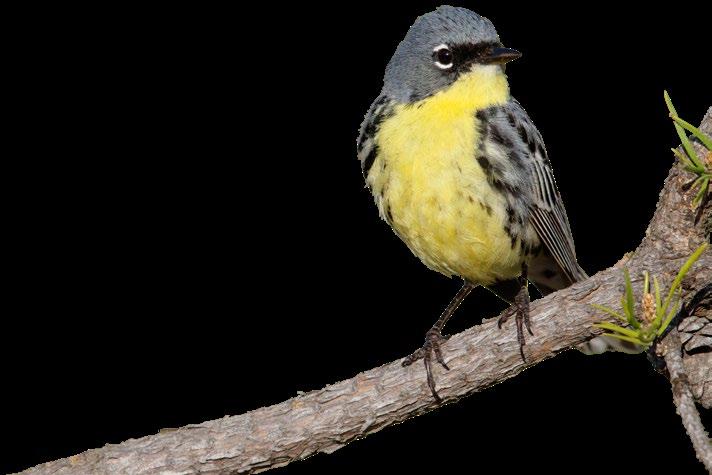
Ewert and Falon Cartwright, Director of Science and Policy for The Bahamas National Trust, discuss jack pine fire ecology in the Kirtland’s Warbler’s breeding habitat in Michigan.
Steve Roels (top), Jacob Spendelow (bottom)
Ewert has worked to conserve the Kirtland’s Warbler for more than 30 years.
Action & Advocacy

Tips for Gardening without Harsh Pesticides
Anyone can attract native birds and other wildlife by maintaining a yard, window box, or even a potted plant on a balcony. If you are in the planning or renovating stages of your garden, we advocate planting native plants! Once established, native plants are hardier than most non-native ornamentals and provide more food for birds.
Part of any garden is pest control, of course. To do so with the well-being of your wild visitors in mind, avoid using harsh synthetic chemicals. These are often labeled as “broad spectrum” pesticides, meaning they will kill a wide variety of plants, insects, and fungi rather than being highly targeted to only the pests at hand. Synthetics also typically can linger in the soil and water for a long time after being applied, causing problems for weeks or months to come.
When thinking about pest control on your outdoor plants, remember: Birds need bugs. It’s as simple as that. Many of the insects visiting and using your outdoor space are important parts of a food web. So before you reach for insect-killing chemicals, consider how you can encourage biodiversity. A few chewed leaves or multi-legged neigh
bors can actually be a sign that your garden is doing good things for you and for birds!
If you have invasive species or plants that are overloaded with insects, and you feel you must take action, consider one of these alternatives to harsh chemicals.
Essential-oil-derived insecticides, which are available at most retailers, can also be made at home. Another easy DIY solution: Mix 1–2 tablespoons of dish soap or vinegar in 1 quart of water and apply directly to plants with pests. The insecticide leaves no lingering effects and can be washed off with water. Repeat every 4–7 days until the infestation is gone.
To control weeds, boiling hot water is a great alternative to synthetic chemicals. Simply (and carefully!) bring a kettle of water to a gentle boil and apply directly to plants growing along borders or in pavement cracks. Wait 1–2 hours before pulling. In garden beds, sprinkle corn gluten meal around the base of plants to keep small weeds from popping up. Water the gluten meal to activate it. For broadleaf weeds such as dandelion, plantain, and chickweed, mix 10–15 drops of essential oils (clove, cinnamon, or tea tree) into 1 cup of water. Pour into a spray bottle and apply directly to leaves. (Use with caution, however, as some essential oils can be toxic. Gloves and a
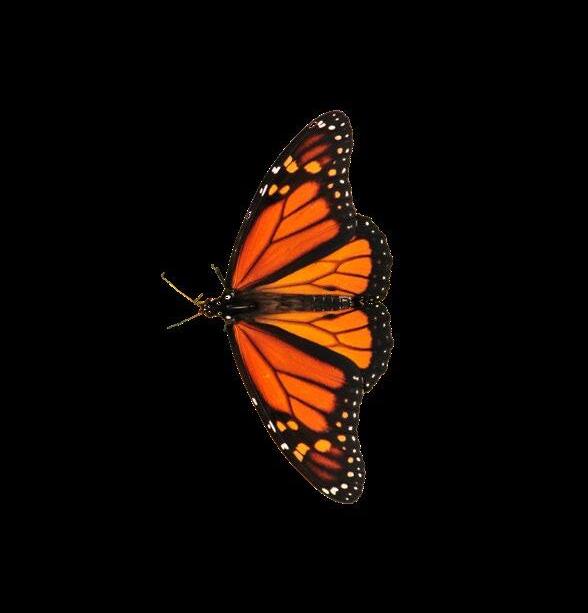
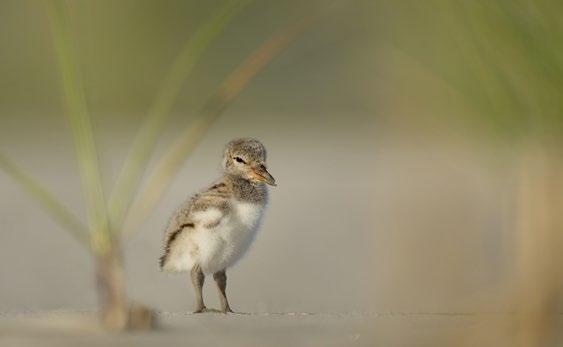
To Catch an Oystercatcher
by Sea McKeon
The Outer Banks of North Carolina are a series of long, low islands, not much more than sandbars, that reach into the North Atlantic to meet the Gulf Stream. They have much to teach young naturalists. When I was in my early 20s, I spent one summer monitoring American Oystercatcher nests and would catch adults to put unique bands on their legs. I was supposed to band chicks, too, but every one of the nests I monitored had failed. Sadly, most were run over by the four-wheeldrive trucks that people would drive up and down the beach along the high wrackline, where oystercatchers
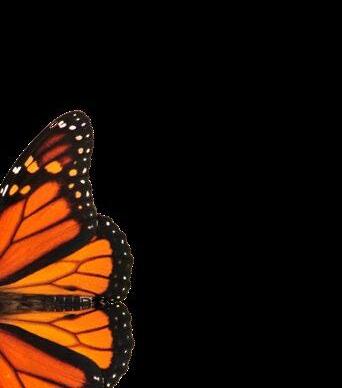
One evening, I planned to go offisland for a concert, so I put on a shirt with a collar and buttons and dress shoes — even a bowtie. As I was leaving the cabin, my roommate walked in and told me he had just seen an oystercatcher chick at the southern point of the island. He was a Piping Plover biologist but still relatively reliable with bird identification. I could not miss the one surviving chick of the season, so I hopped on an ATV
and got to the point as fast as I could with my banding kit.
Waters run fast through the inlets between islands, and big fish come with them. Fishers were spaced evenly around the point from the sound to the sea, all aware that their best chance of a meaningful catch would be around sundown with the outgoing tide — just when I’d arrived. In the middle of the fishers stood an oystercatcher chick, all legs and fluff, tended by two parents in tuxedos and wild eye makeup. I thought, “I can get this done quickly and make it back in time for the ferry to get to the concert.” I walked toward the chick while looking nonchalantly off to the side.
The parents immediately saw through my ruse and alarm-called, which loafing Laughing Gulls nearby picked up. The chick froze for a moment, spotted me, and bolted toward the sound. I chased slowly, not wanting to exhaust him, and thought he would be easy to catch against the water. That was when I learned my first lesson about American Oystercatchers that
evening. The chick paused at the water’s edge and then plunged in, paddling rapidly away like a little duck, and was picked up immediately by the current headed out to sea. I had just a moment to imagine the one fluffy little chick of the season being inhaled by a tremendous snook (a marine fish) as I watched from shore. I kicked off my nice shoes and swam after him.
Now the two of us were being jettisoned out to sea, through the standing waves of the inlet, all outlined against a remarkable Outer Banks sunset. I caught up with the chick, reached for him, and had my second lesson for the evening. Oystercatcher chicks not only swim, but they can also dive. Five or six times, the bird dove just out of reach as I got close, plunging down, wings open like an eider or puffin.
Finally, the chick grew tired and I could lift him out of the water. I slowly swam into the beach, having journeyed fully around the point. I passed between two surf-casting fishermen who had no comment other than “nice tie.” I dried and warmed the chick, gave him his permanent band, and walked him as close to his parents as they would allow. I never made the ferry or the concert, but two weeks later, I would see this bird successfully fledge and fly over the same inlet with his parents to another island — one where he was less likely to be bothered by young naturalists.

A young American Oystercatcher stands among beach grass.
American Oystercatcher
Sea McKeon is ABC’s Marine Program Director.
Hennessy/Shutterstock (top), Gerald Marella/Shutterstock (right)
The Science of Birds

Study Finds Declines in Common Birds
Recent research published in Science reveals that North American bird populations are declining most severely in areas where they should be thriving.
Researchers from American Bird Conservancy and Cornell Lab of Ornithology analyzed 36 million bird observations shared by birders to the Cornell Lab’s eBird program alongside multiple environmental variables derived from high-resolution satellite imagery for 495 bird species across North America from 2007 to 2021.
The team set out to develop reliable information about where birds are increasing or decreasing across North America, and the patterns they uncovered were startling.
Birds are declining most severely where they are most abundant. Eighty-three percent of the species they examined are losing a larger percentage of their population where they are most plentiful. Burrowing
Owls, for example, are declining on the Great Plains, and fewer Great Blue Herons are breeding along the Mississippi River — traditional strongholds for these species.
“We’re not just seeing small shifts happening, we’re documenting populations declining where they were once really abundant. Locations that once provided ideal habitat and climate for these species are no longer suitable,” said Alison Johnston, lead author and ecological statistician. Johnston initiated the study as a research associate at the Cornell Lab of Ornithology and is now a faculty member at the University of St. Andrews in Scotland.
“The data provide unparalleled detail into the question of how birds are doing across their ranges,” said Eliot Miller, coauthor and BirdsPlus Index Manager at ABC. “Unfortunately, the answer is ‘not very well’ for most birds, including some of
our most familiar backyard friends like the Black-capped Chickadee and American Robin.”
The research, Miller said, also helps conservationists “understand geographic variation in these population trends that will let researchers determine what causes them. This will let us better target conservation efforts toward where birds need them most.”

New Seabird Breeding Site in a Desert
This spring, Chilean researchers reported the discovery of a new breeding site for the Markham’s Storm-Petrel, a seabird that breeds in about a dozen colonies in the deserts of southern Peru and northern Chile. The finding is the latest evidence about the breeding habitats of desert-nesting storm-petrels — birds that rely on the ocean and use extreme nesting environments. Such research has helped ABC’s partners in Chile search for areas in need of protection.
The new site is on both sides of a road in a desert plain called Pampa Colorada
Black-capped Chickadee
Private Landowners Key to Conservation
A common misperception about the Endangered Species Act (ESA) is that government agencies use a “hammer-and-nail approach” to restore endangered species populations through litigation and regulation. In fact, implementation of the law is most often marked by a cooperative and proactive mindset to conservation, especially for species that are found on private and working lands.
A 2023 symposium of the Texas Chapter of the Wildlife Society commemorating the ESA’s 50th anniver-

in far northern Chile. The researchers recorded 92 potential nests and several dozen hatchlings and adults in a 2.3-square-mile area.
The storm-petrel is a Near Threatened species that is endemic to the Humboldt
sary featured a panel of wildlife and conservation professionals from agencies, universities, nonprofits, and industries. The members’ discussions on topics like the ESA’s evolution, conservation successes, and persisting challenges were described in a paper published this spring in the Wildlife Society Bulletin. Chloe Dannenfelser, ABC’s Texas Coastal Outreach Coordinator, attended the symposium and was among the paper’s 12 coauthors.
The paper emphasizes that incentive programs are a key aspect
Current off the Pacific coast of South America. The all-dark species, similar in appearance to the Black Storm-Petrel, has an estimated population of 57,600–60,000 breeding pairs.
The authors note that the new site is critical for conservation of the species, and they argue for measures to mitigate threats to the birds, which include collisions with traffic and other road-related hazards.
The research team included experts from ABC partner Red de Observadores de Aves y Vida Silvestre de Chile and other organizations. Their report appeared in the July 2025 issue of Cotinga, the journal of Neotropical Birding and Conservation.
of ensuring conservation success with private landowners. “Without compensation, conservation efforts may often amount to mere conversation,” the authors write. “By engaging with federal and state governments, nongovernment organizations, and private organizations, landowners can access diverse resources and financial support through grants and programs such as payments for ecosystem services.”
For example, in the 1990s, Safe Harbor Agreements were introduced for conservation of the Red-cockaded Woodpecker on private lands. That led to “increased conservation of the birds’ longleaf pine habitats and the species’ ultimate downlisting to Threatened status,” the paper notes. It concludes by looking ahead to the challenges and opportunities facing the next generation of conservation leaders who inspire “hope for the future of the ESA and biodiversity conservation over the next 50 years.”
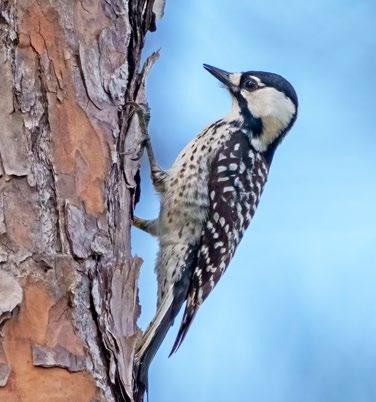
Red-cockaded Woodpecker
Pete Morris (left), Larry Master (right)
Art inspired by birds can be more than pretty images — it can also move people to want to help our feathered friends. In the past year, ABC and several of our partners have celebrated conservation-themed art projects in communities from Hawai‘i to Peru. We’re happy to share these inspiring projects here. Enjoy!
Sharing Hope in Hawai‘i Community Art Takes Wing
In summer 2024 on Hawai‘i Island, ABC collaborated with the Estria Foundation, artist Estria Johnson, and the Keauhou Bird Conservation Center to create a mural on the side of Mountain View Elementary School. The mural features two ‘Alalā — the Endangered native Hawaiian Crow — as the centerpiece. Since ‘Alalā mate for life, they symbolize loyalty and lifelong commitment. They also represent Hawaiians’ dedication to hō‘ola lāhui (the revitalization and continuation of the people). Within the ‘Alalā’s outstretched wings, the mural depicts the Palila, ‘Akeke‘e, and ‘Akikiki — species that are struggling to survive — as well as hungry ‘Alalā chicks and an egg-filled nest. The school’s students helped paint the
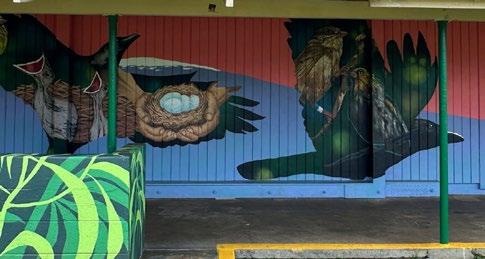
mural, and they visited the Keauhou Bird Conservation Center to observe the birds firsthand, learning about the serious challenges they face.
Celebrating the Kirtland’s Warbler
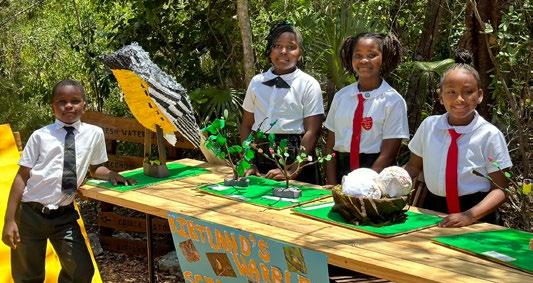
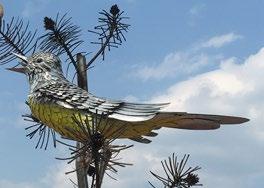
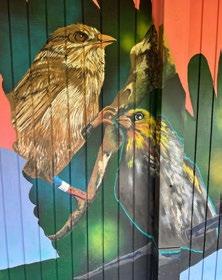
The Kirtland’s Warbler, one of North America’s rarest songbirds, was the focus of recent art projects on both ends of its migratory journey. In April, in the bird’s wintering range in The Bahamas, the Leon Levy Native Plant Preserve on the island of Eleuthera hosted the inaugural Kirtland’s Warbler Science Expo. Nineteen elementary school students shared projects and art that showcased their knowledge of the warbler’s natural history, migration, and conservation. Alvanna Johnson, ABC Conservation
and Justice Fellow, worked with Bahamas National Trust staff at the preserve to organize the event. Then in early June, in the heart of the bird’s breeding range, the hosts of the annual Kirtland’s Warbler Festival in Roscommon, Michigan, unveiled a 15-foot sculpture of a singing Kirtland’s Warbler perched in a jack pine. Artist James Seaman of New York created the work, which stands in front of a community center. Roscommon was also recognized as the first Bird City in Michigan at the event. Michigan Audubon operates the state’s Bird City program, and ABC heads up the Bird City Network in the United States.
This mural in Hawai‘i depicts native Hawaiian birds, including ‘Alalā (Hawaiian Crow).
Students in The Bahamas display art inspired by the Kirtland’s Warbler. And a new sculpture of the bird now stands in Roscommon, Michigan.
Ben Catcho (top), Monika Carroll (middle), Steve Roels (bottom)
Promoting Clean Beaches in Texas
This year marked the third annual Beach Sign Art Contest sponsored by SPLASh (Stopping Plastics and Litter Along Shorelines), a project of ABC, Gulf Coast Bird Observatory, and Black Cat GIS aimed at removing trash from Texas beaches. More than 600 kids ages 4–18 submitted art depicting Texas coastal birds or other wildlife; the SPLASh team selected 20 winning designs to be used on signs posted at high-traffic beach access points and fishing areas along parts of the upper Texas
coast. The signs encourage beachgoers to take better care of coastlines and are especially important during the summer months, when more people visit the coasts and accidentally or intentionally leave trash behind. In an area that is prone to excessive beach litter, the young people’s voices and art send a powerful conservation message. splashtx.org/artcontest

Birds and Community Pride in Peru
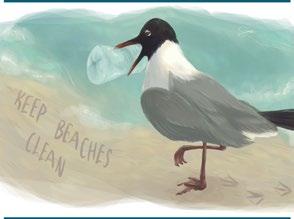

In the town of El Molino, in north-central Peru, renowned artist Edwin Enrique Yzquierdo Fuentes (Kadu) and a team of four others recently completed a large mural showing nine endemic birds on a school building. With the support of long-time ABC partner ECOAN (Asociación Ecosistemas Andinos), community members sought to beautify the town and increase the visibility of the area’s remarkable biodiversity. The birds depicted on the mural include the Neblina Tapaculo, Plain-tailed Warbling Finch, Black Metaltail, Striated Earthcreeper, Rufous-eared Brushfinch, White-cheeked Cotinga, Rusty-crowned
Tit-Spinetail, Black-necked Woodpecker, and Purple-backed Sunbeam. For many years, ECOAN and ABC have worked to restore habitats and populations of numerous Peruvian bird species. The sunbeam (a hummingbird found only in a small area of northern Peru) has been the focus of recent tree-planting and other conservation activities.

Read more about these projects and view more images on our website abcbirds.org/CommunityArt
These paintings and others encouraging beachgoers to keep coastal areas clean are posted on signs along the upper Texas coast.
Artist Edwin Enrique Yzquierdo Fuentes (center, in yellow shirt) stands with friends and family in front of part of a new mural in the town of El Molino. View the artist’s work on Instagram @kaduyzquierdo.
Laughing Gull with plastic bottle: Stephanie C., Turtle in circle: Valeria P., ECOAN
Film Highlights Seabird Conservation
Artisanal fisheries account for 40 percent of the global fish catch and help feed 1 in 12 people worldwide. They also present a major challenge with bycatch — the accidental capture of nontarget species like seabirds. Today, 19 out of 21 albatross species are threatened with extinction. One of them, the Waved Albatross, nests in the Galápagos and forages along Ecuador’s coast, where community-led innovation is offering hope.
In June, ABC’s Marine Program premiered “Caught by Mistake,” a new short film from the coast of Ecuador. It tells the story of Ecuadorian fishers working with conservationists to protect seabirds. From adopting safer gear like the NISURI system — developed by ABC’s Giovanny Suárez Espín — to GPS tracking and
New and Notable
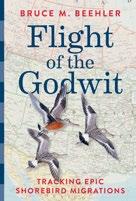
Flight of the Godwit: Tracking Epic Shorebird Migrations by Bruce M. Beehler, Smithsonian Books, 2025, 272 pages, $27.95. In spring 2019, Smithsonian ornithologist and prolific author Bruce M. Beehler set out on a road trip in search of migrating shorebirds across the United States and Canada. Beehler, a scientific affiliate of ABC, would make 12 more such trips each spring through 2022, traveling by car, plane, helicopter, train, kayak, and on foot. He visited shorebird stopover and breeding sites, primarily in search
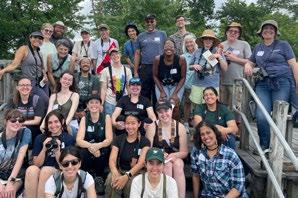

ocean education, they’re proving that conservation and fishing can thrive together.
This video was supported by The David and Lucile Packard Foundation, the National Fish and Wildlife Foundation, the Agreement on the Conservation of Albatrosses and Petrels, and ABC.
Books
of his “Magnificent Seven” species: Hudsonian, Bar-tailed, and Marbled Godwits; Whimbrel; Long-billed and Bristle-thighed Curlews; and Upland Sandpiper. In this wonderful book, he describes his searches for the far-flying shorebirds, the conservation challenges they face, and the wonder they have long evoked in humans.
The Birding Dictionary by Rosemary Mosco, Workman Publishing, 2025, 176 pages, $14.99. This new book from Rosemary


Watch the film at abcbirds.org/ CaughtByMistake
Mosco, the creator of the web comic Bird and Moon and the author of A Pocket Guide to Pigeon Watching, is sure to put a smile on your face. With her trademark whimsy, Mosco offers playful and often hilarious explanations for terms that birders use when we talk about birds and birding. The American Robin, for example, is a “device that converts worms into 100-decibel songs outside your bedroom at 4 a.m.,” a goose is a “duck with a larger bite radius,” and a tern is “like a gull, but pointier.” Mixed among the entertaining definitions are more than 50 of Mosco’s funny illustrations of screech-owls, sandpipers, nighthawks, and more.
Birding and Purpose
Together with Latino Outdoors, the Feminist Bird Club’s DMV Chapter, Friends of Kenilworth Aquatic Gardens, and OUT for Sustainability, ABC held our third annual Birding Con Orgullo (Birding with Pride) event in June in Washington, D.C. ABC’s Naamal De Silva shared poems by Albert Ríos and J. Drew Lanham about our identities, histories, beloved birds, and finding solace in nature. The group (pictured at left) then explored Kenilworth Aquatic Gardens and encountered night-herons,
orioles, and the first lotuses of the year. Find a summary of the outing on our Facebook page at abcbirds.org/Orgullo.
Erica Sánchez Vázquez

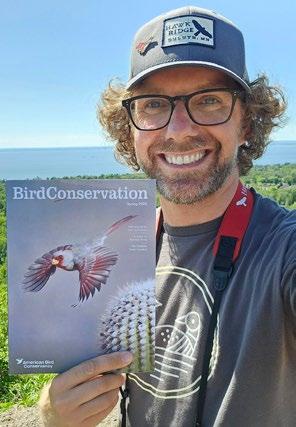
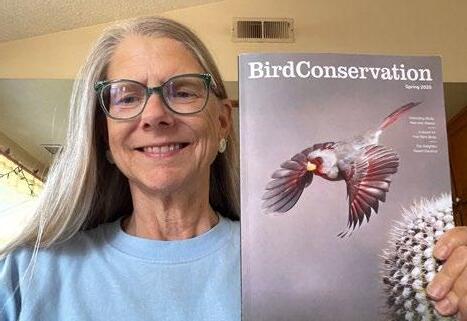
Send us a photo of you holding the magazine (particularly in a birdy place), and you may find yourself featured in a future issue of Bird Conservation! Upload your submission to abcbirds.org/MagPic, and please tell us where you took the photo. We can’t wait to see where your love for birds (and Bird Conservation!) takes you!
Wear Your ABC Support Take Us With You!
Support ABC today with a one-time gift of $35 or more or a monthly gift of $10 or more to claim an exclusive ABC hummingbird baseball cap — a symbol of your dedication to bird conservation. It’s sure to turn heads and spark the question, “Hey, where did you get that hat?”

Donate today! abcbirds.org/ monthly
Please scan this code or visit the following web page to let us know what you think about this issue of Bird Conservation. Thanks for your time — and for your support of American Bird Conservancy! abcbirds.org/MagSurvey



Counterclockwise from top right: Carol Roberts enjoyed our spring issue at her Oceanside, California, home. Annette Schuh Hamilton, a U.S. postal carrier in Maryland, enjoyed delivering the magazine to our members’ mailboxes. (Shoutout to all postal workers who get our publications into your hands!) And Erik Bruhnke visited Hawk Ridge Bird Observatory in Duluth, Minnesota, with a copy of the issue.
Erica Sánchez Vázquez (bottom)
Remembering Riches Amid Tireless Hope
by Laura Erickson
On the last day of February 2025, my husband and I set out on a 700-mile road trip from Minnesota to Michigan State University so we could bird at Baker Woodlot on March 2. I wanted to see the first species on my life list, a Black-capped Chickadee, on the golden anniversary of my becoming a birder at the spot where it happened.
It was a frigid 20 degrees, but strolling around campus, I recalled trees that teemed with warblers in May 1975, not that I could identify more than a fraction of the bewildering array — I ended that spring with a mere five warblers on my life list. I was better prepared the next spring, identifying 23.
In June 1976, we moved to Madison, Wisconsin. Every weekday morning in May for the next four years, I birded in a nearby park before heading to work, and warblers were everywhere, sometimes in huge numbers. In 1981, we moved to Duluth, Minnesota, a major migration crossroad where warblers were even more plentiful. Now I could find dozens in my own backyard and bazillions at local birding spots. By the mid-1990s, warbler movements didn’t seem as massive or
regular anymore, but many ornithologists dismissed my concerns as “rose-colored memories.” These days, we have solid proof that there really were many more birds back then.
Hearing my grandpa’s stories and sensing his sorrow gave me a sense of urgency to protect the species we still have.
It has been heartbreaking seeing some species disappear before my very eyes. On moving day in July 1981, I heard Evening Grosbeaks in the box elders the moment we arrived at our new house. We set up a couple of feeders that day, and the birds almost instantly descended upon them. By late August, the grosbeaks were consuming at least one 50-pound bag of sunflower seeds every week — often two! Throughout the 1980s, from July through May, they were the most abundant species in our yard. Now, most years I don’t attract even one.

The decline of Evening Grosbeaks has been well documented. Some people claim that the species wasn’t regularly observed in the upper Midwest until the mid-1900s, but history paints a different picture. In 1823, an individual bird obtained by the Ojibwe tribe in Sault Ste. Marie, Michigan, became the type specimen for the species. H. R. Schoolcraft, who prepared the specimen, noted, “The species is said to be common
about the head of Lake Superior, at Fond du Lac, etc.”
In 1995, marine biologist Daniel Pauly documented in Trends in Ecology and Evolution how fishery scientists generally consider the size of fish populations at the start of their careers as the “normal” that they set as a goal for management. As each new generation enters the field, fish stocks at that point become the new normal, producing “a gradual accommodation of the creeping disappearance of resource species.” The phenomenon is called generational amnesia and applies not just to fish but to birds and other animal groups as well.
When I was little, my grandpa, born in 1896, told me about Passenger Pigeons. He’d never seen one, but his own grandpa had. Hearing his stories and sensing his sorrow gave me a sense of urgency to protect the species we still have. Now, people in my generation should be telling our own stories to foster this commitment in our grandchildren.
It’s a mercy that young people don’t have my visceral memories of how much we’ve lost during my lifetime. But I’m grateful that even without remembering past riches, so many are working tirelessly to make sure we don’t squander the riches we still have.

Laura Erickson, shown with her grandson Walter, is an awardwinning writer, podcaster, and book author focused on sharing stories and information about birds.
Laura Erickson
Evening Grosbeak

Our Legacy for Birds
“We get a great deal of pleasure from watching birds and have been fortunate to be able to travel and see amazing birds around the world. We realized there would be no more fitting legacy than helping to protect the wonderful diversity of birdlife that has given us so much pleasure, and that’s why we included ABC in our estate plans. American Bird Conservancy is a natural fit for this aim, as it is dedicated to tackling the full spectrum of threats to birds in the Americas. We like ABC’s science-based, collaborative approach, using both hands-on conservation projects and advocacy. Every year ABC accomplishes an amazing amount, from purchasing the last remaining habitat for some of the rarest birds to advancing legislation to address widespread threats to our common, everyday birds. We know that money given to
ABC will be used effectively and ensure that future generations will also be able to experience the joy of seeing beautiful birds in the wild.”
— David Harrison and Joyce Millen
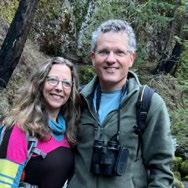
If you are interested in more information on how to leave your own legacy for birds, or if you have already remembered ABC in your estate plans, please contact Jack Morrison, ABC Director of Major Gifts and Planned Giving, at jmorrison@abcbirds.org, 540-253-5780, or scan this code to email him.
Western Bluebird fledgling
Scott Carpenter

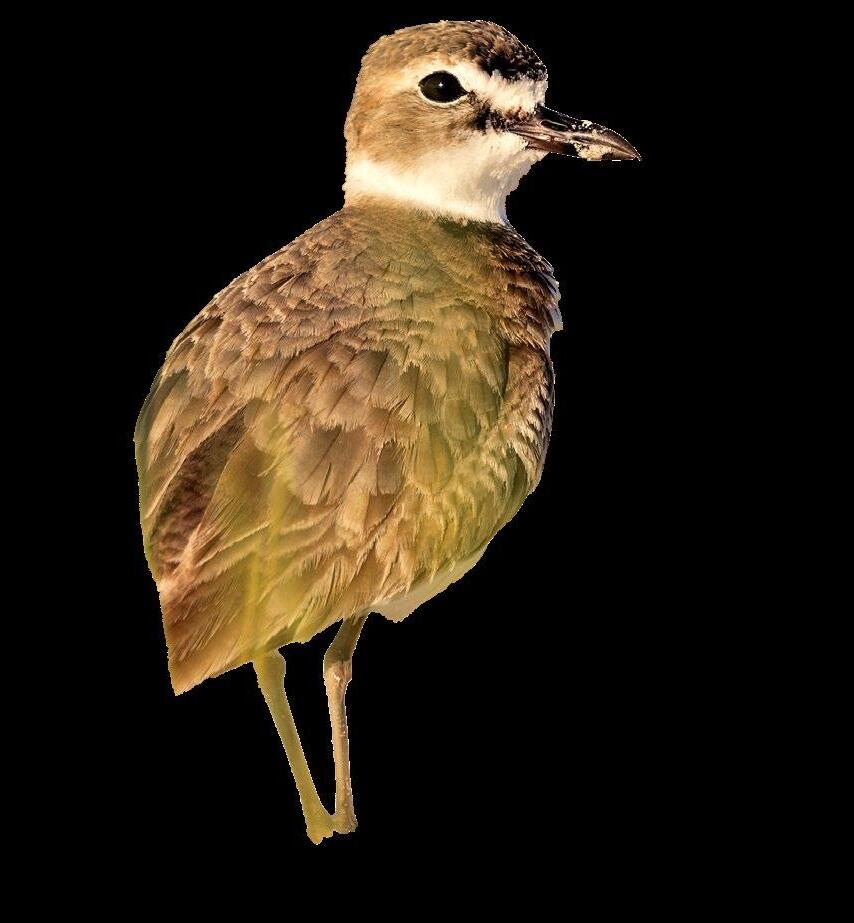
Wilson's Plover on a Florida beach by Kristian Bell/ Shutterstock
